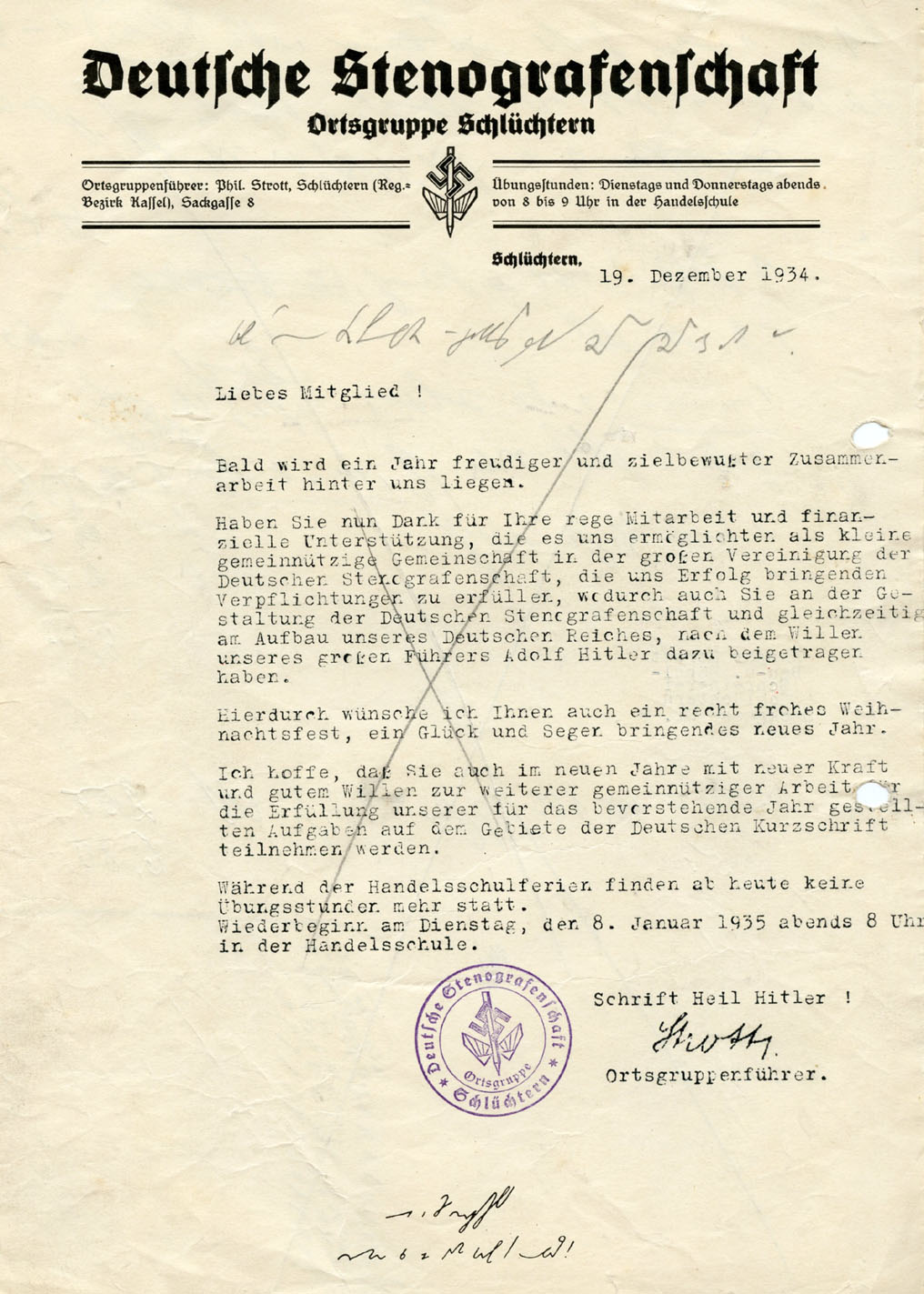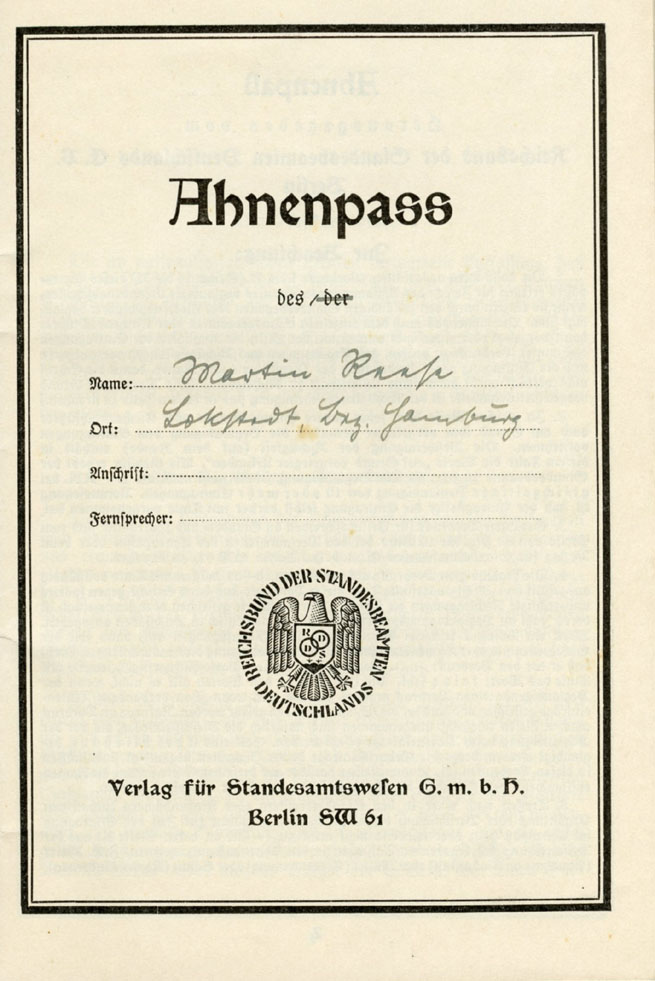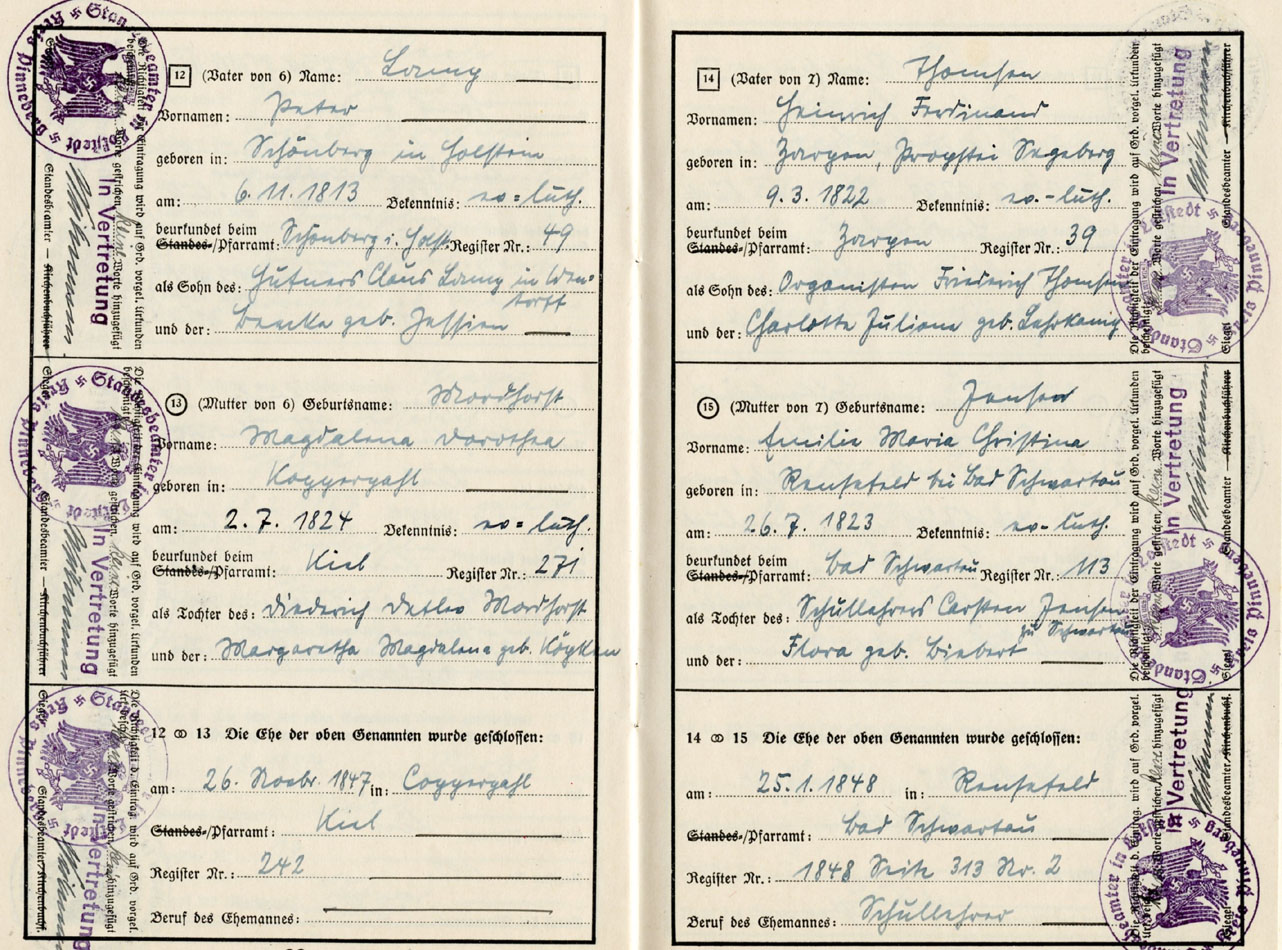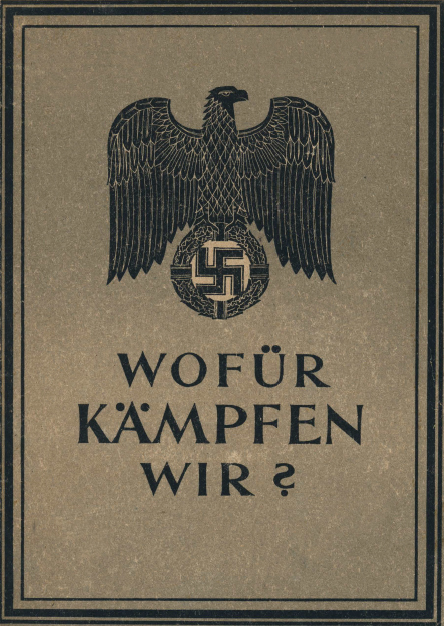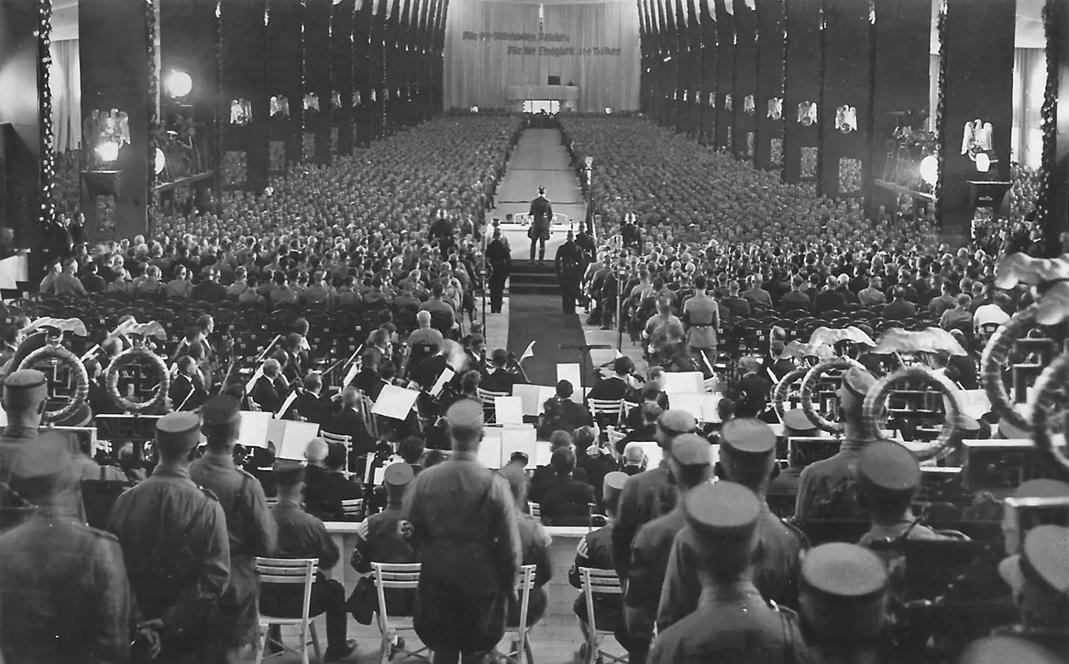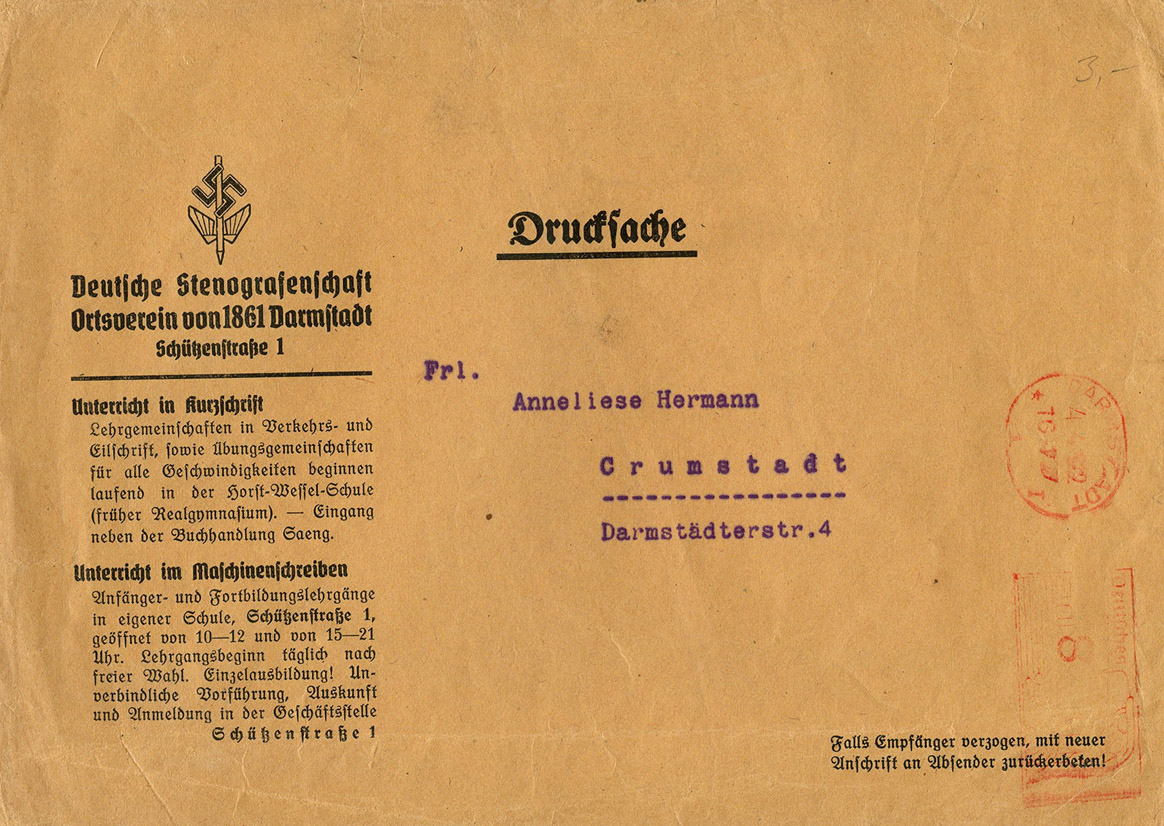
[Below: Magazines from the German Worker's Front (Deutschen Arbeitsfront) from 1934 called Der Schulungsbrief (The Training Letter).]
[Below: 1937 imagery from the German Red Cross 'Wir sind bereit!' (We are ready!)]
[Below: 1942 NSDAP district calendar showing a magical hall]
[Below: Breathtaking... this is the Congress Hall (Kongreßhalle).]
[Below: The above hall empty.]
[Below: 'Tagung der NS.-Frauenschaft Reichsparteitag 1936.' (Meeting of the National Socialist Women's League - Reichsparteitag 1936).]
[Below: 1938 Reich Party Day. It says: 'Kundgebung der NS.=Frauenschaft in der Kongreßhalle' (Rally of the NS.=Frauenschaft {National Socialist Women's League} in the Congress Hall). I think this is Gertrud Klink, the leader of the NS-Frauenschaft, speaking.]
[Below: 1936 Reich Party Day. Julius Streicher is at the podium. It says:
'Ein Starkes Reich
(A Strong Empire
[Below: This angle of behind the speaker is interesting and less often shown. Click to enlarge.]
[Below: I really love this shot.]
[Below: NSLB National Socialist Teacher's League pin.]
[Below: National Socialist eagle for the Diplomatic Corps.]
[Below: This book is from 1933.]
[Below: A strong eagle from a Hitler Youth songbook.]
[Below: Nationalsozialistische Monatshefte (National Socialist Monthly Bulletin), December 1940]
[Below: Nationalsozialistische Monatshefte (National Socialist Monthly Bulletin), 1944)]
[Below: Der Schulungsbrief (The Training Letter)]
[Below: Nationalsozialistische Monatshefte (National Socialist Monthly Bulletin)]
[Below: Die Reichspost im Staate Adolf Hitlers (The Reichspost in the state of Adolf Hitler). The Reichspost is the post office.]
[Below: Der Weg Zum Reich (The Way to the Empire).]
[Below: 4 Jahre Aufbau an bedrohter Grenze (4 years of construction at a threatened border).]
[Below: Deutsche Gedenkhalle (German Memorial Hall).]
[Below: Kampf und Sieg (Struggle and Victory).]
[Below: Geboren als Deutscher, Gelebt als Kämpfer, Gefallen als Held, Auferstanden als Volk (Born as a German, lived as a fighter, fallen as a hero, risen as a people). This is the cover of an 1936 RDB yearbook, circa 1934.]
[Below: This is the cover of an 1936 RDB yearbook. The Reichsbund der Deutschen Beamten (RDB), means 'Reich Federation of German Civil Servants'.]
[Below: Der Schulungsbrief (The Training Letter), circa 1937.]
[Below: Erster Deutscher Beamtentag (First German Civil Service Day), circa 1938.]
[Below: Vonder zur NSDAP (From the NSDAP), circa 1939.]
[Below: The eagles from the covers of four Technische Nothilfe (TENO) manuals, circa 1937-40. Technische Nothilfe means 'Technical Emergency Help' and was a volunteer emergency response unit in charge of technical civil defense.]
[Below: Die Adolf Hitler Schule (The Adolf Hitler School), circa, 1941.]
[Below: Wir schaffen, (We Create), this is a year book of the BDM (League of German Girls), 1941.]
[Below: Schriftenreihe für die weltanschauliche Schulung der Ordnungspolizei (Series of publications for ideological training of the order police), 1941.]
[Below: Postarchiv einundsiebzigster Jahrgang neue Folge, Berlin (Post archive seventy-first year new series, Berlin, 1943), 1943.]
[Below: Deutsche Bücher (German Books), 1939.]
[Below: Liederbuch der Nationalsozialistischen Deutschen Arbeiterpartei (Songbook of the National Socialist German Labor Party).]
[Below: Liederbuch der Nationalsozialistischen Deutschen Arbeiterpartei (Songbook of the National Socialist German Labor Party).]
[Below: Herausgegeben von der Leitung der Auslandsorganisation der NSDAP. im Gauverlag der AO. Seefahrt und Ausland NSDAPAO (Issued by the management of the NSDAP's foreign organization. in the Gauverlag of the AO. Seafaring and abroad.), circa 1942.]
[Below: This is from the NSDAP/AO - the NSDAP/AO was the foreign organization branch of the National Socialist German Workers Party (NSDAP), Italian-Beobachter Parteiamtliches Organ der Landesgruppe Italien der AO der NSDAP (Italian Observer -Official party organ of the National Group Italy of the AO of the NSDAP), Italy, circa 1939.]
[Below: This is also from the NSDAPAO, Italy, Italian-Beobachter Parteiamtliches Organ der Landesgruppe Italien der AO der NSDAP (Italian Observer -Official party organ of the National Group Italy of the AO of the NSDAP), Italy, circa 1939.]
[Below: This is also from the NSDAPAO, Italy, Italian-Beobachter Parteiamtliches Organ der Landesgruppe Italien der AO der NSDAP (Italian Observer -Official party organ of the National Group Italy of the AO of the NSDAP), Italy, circa 1939.]
[Below: Beautiful award folder!]
[Below: Here is an eagle patch from the NSB (National Socialist Student League).]
[Below: Here is the rare document to the above patch.]
[Below: Close-up.]
[Below: This picture is taken from the Berliner Illustrierte Zeitung, July 29 1943, number 30. Note the NSB (National Socialist Student League) eagle on her bathing suit.]
[Below: Here is an envelope from the NSB (National Socialist Student League).]
[Below: Here is another envelope from the NSB (National Socialist Student League). This was sent from Bohemia and Moravia (modern Czechoslovakia) in 1940.]
[Below: Eagle close-up.]
[Below: On the subject, here is an NSB (National Socialist Student League) membership diamond. This was given to members of the Hitler Youth who qualified to join the NSB. Front/back.]
[Below: National Socialist Student League poster.]
[Below: A stubby little eagle at a BDM event.]
[Below: An experimental plane in a wind tunnel. Check out the eagle in the background.]
[Below: Wow. A factory of some sort. An amazing huge eagle. Note Adolf Hitler taking a tour of the factory, to the right/bottom!]
[Below: Hmmm this is not easy to translate. The word 'Welscher' is very difficult. Any German speakers want to tell us what this means and give us a translation? We would be most grateful! Anyway, this is a very strange looking eagle.
*Update! Thanks to our gracious comrade P. we have some information on this text.
First:
'Was Ahnen uns schon zugelegt
hat hier kein Welscher noch zerfegt'
'What our forebears created for us here
has yet to be destroyed by a Latin*'
Interesting. Let's read P.'s thoughts on this:
'"Welscher" is indeed hard to translate. It orginally generally referred to anyone from south of the Alps (i.e. an Italian) at a time when Northern Italy was part of the Holy Roman Empire, but later meant any non-Germanic person. I suspect the text refers to a part of Germany that was ceded to another country after the First Word War. "Welscher" is unlikely to refer to Czechs, Danes or Poles, so the reference may be to France (Alsace and Lorraine) or South Tyrol.'
And lastly, around the eagle it says:
'Deutsch war
Which P. tells us it says:
'What has been sown
[Below: Here is the actual tinnie of the postcard above!]
[Below:
Translates as:
'We carried the yoke
Beautiful!!]
[Below: This envelope celebrates Strassburg's one year return to Germany ('Ein Jahr deutsch!' = 'One Year German!'). Strassburg had been fought over a handful of times in the past centuries (since 1681), but in 1871, after the Franco-Prussian war, Strassburg became a part of the German Empire. Germany did a massive rebuild of the city and invested untold Reichsmarks. After WWI Strassburg was handed over to France. After France was defeated in WWII in 1940 it returned to Germany. However, after WWII it was given to France... German is the main language spoken there today. You'll notice the German Hindenburg stamps below are overprinted 'Alsace'. Strassberg is the capital of Alsace, which is located on the west of the Rhine river. Okay, sorry for the history lesson. More like 'Stressburg', geez. Anyway, here are some unique eagles with shields on their breasts.]
[Below: Here is a little newspaper called 'Merkblätter für die Kriegerkameradschaften' (translated literally as 'Leaflet for Warrior Fellowships'), December 1940.]
[Below: Close-up of eagle. The iron cross on the eagle's breast always means it's a veteran organization.]
[Below: Die Heimatpost (The Home Post), August 1943. This seems like it might be an interesting read. Can any Germans translate this for us? We would be most grateful!]
[Below: Close-up.]
A German comrade graciously answered our call for help! He went above and beyond to help us... it is actions like this that give me strength and motivation in this fight. This selflessness really means the world to me. If only there were a thousand more like him we could wake up the world. Anyway, thank you my distant friend and comrade. From all of us.
I've decided to include his introduction, since it adds to the flavor of the translation. Enjoy and as you'll soon read, 'learn to hate and to wait'... that is such an awesome quote.
'I promised to translate the article and here is my translation of “Die Heimatpost”. Please check if I used correct English. Some sentences in the article are very long. I didn’t want to
change the structure of the text and therefore I didn’t split the long sentences into shorter ones. I
hope these sentences are understandable in my translation. Please tell me if there are sentences
which make no sense. Then I will try to split the long sentences into two or three shorter ones.
In the German text is the word “Mischling”. This describes a human whose parents are from
different races. I searched in several online dictionaries for a translation of “Mischling”. The people
who work for the online dictionaries seem to think that there are no “hate speech” words and
therefore an English translation was hard to find. For the German word “Mischling” I choose the
English word “crossbreed”. Please tell me if this is the correct word.
In the German text before the name of the author “Zahn” (bottom, right) there is an abbreviation “i.
A” that means “im Auftrag” in German.
I searched in the internet and learned there is no equivalent for this abbreviation in the UK or USA
because it only exists in Germany. Therefore I did not translate it.
Start of translation:
The Home Post (Die Heimatpost)
James Monroe, president of the USA from 1817 to 1825 explainedin 1823 – in the so called Monroe
doctrine – against the intervention in Europe of America in European questions.
Since then the slogan rolled around the world: “America to the Americans!”. And so it has been
written day after day, year in and year out on patient paper ['patient paper' means: promises being written down, do not mean much by themselves - editor]. How is the beloved reality? Well, nobody
cried from over there “Europe to the Europeans!”: And so they were here in World War I. What is it
now?
They, the Americans, are sitting in England, the outskirts of Europe, in Africa and Asia and
everywhere else where they shouldn’t be according to Monroe. The business man and banker,
most of the time a Jew, takes a stand behind the soldier to perhaps prove to the world and especially
to his English cousin that Monroe is long dead. It all has been such a long time; as well
as the former Prussian officer and at that time Washington’s chief of staff, the German Friedrich von Steuben, who co-founded American independence.
After the French, the Dutch and the English men acted colonially with success in North America
and the German, who couldn’t find the right place in his native country anymore, as a source of
cultural knowledge and as a fighter for and against American freedom had to pay his price in blood.
[Then] also the Jew came into the land and over time ruthlessly took possession in this land of unlimited
opportunities of the whole economy and political influence –
how he does this in every host
country, where he plays his role.
[The] Jew uses the people of Russia and the steppes of Asia in the east, from the west the
Americans have to line up the second time: to assault Europe!
From his position in the world metropolis [of] New York the Jew tries to fulfill his plan for world domination
with [the] help of paid agitators, Negroes and crossbreeds, that means racially and also mentally
stunted whites of the same kidney as Roosevelt!
Under this field of view look at the Anglo-American terrorists, who drop bombs and phosphor out of
the air onto our German cities, working-class quarters, hospitals, churches, wives and children, old
men and old mothers! Learn to hate and to wait until the moment of vengeance is here! Trust in
yourself, trust in the strength of our nation, trust in our Führer!
In loyalty and strong bond greetings to you, dear comrades, from your old mining town Lugau!
Heil Hitler!
Your leader of the local group
Lugau in September, 1943
i. A.: Zahn, representative during war
End of translation
Further explanation of the text:
1. Lugau
Lugau is a small city in Saxony, Germany. In former days there was a mining industry.
The coat of arms on top of the page of “Die Heimatpost” seems to be the city coat of arms of 1943.
The current city coat of arms of Lugau looks like this:
2. Friedrich Wilhelm von Steuben ( September 17 th , 1730 – November 28 th , 1794 ):
Friedrich Wilhelm von Steuben was a former Prussian officer and Washington’s chief of staff.
[Below: Wow, this is cool. Staatstheater Berlin (State Theater Berlin).]
[Below: Close-up.]
[Below: Reichsverband für Deutsche Jugendherbergen Landesverband Sachsen
Here's an explantion of what exactly this 'Aschberg' is:
It looks like a magnificent place. Truly beautiful. Imagine going there with a group of your fellows in the Hitler Youth.]
Oh, I also love the HEIL HITLER!
[Below: Close-up.]
[Below: 'Turnklub im Nationalsozialistischen Reichsbund für Leibesübungen' (Gymnastics club in the National Socialist Reichsbund for physical exercises).]
[Below: Close-up. This is a very distinct eagle, always used for sports related stuff.]
[Below: Fränkische Feldpost Soldatenzeitung des Gaues Franken. (Franconian field post soldiers newspaper of the Gaues Franconia). This was a small newspaper for soldiers in France, February 1944.]
[Below: This is a meter mail envelope usually used by busineses. October 31, 1940 - HALLOWEEN!]
[Below: Close up. I love this eagle.]
[Below: Another example of meter mail, this one is from Dresden. June 26, 1940.]
[Below: Close-up.]
[Below: A black ink cancel example of meter mail from Strassburg. July 24, 1944.]
[Below: Close-up.]
[Below: Okay, so it's not exactly an eagle... oh well, we'll let this one pass since it is interesting. Deutsche Stenografenschaft Ortsgruppe Schlüchtern (German shorthand, local group Schlüchtern). Shorthand is like what the stenographers in court rooms use. Here is a definition:
I especially like this part:
Okay, lastly, maybe one of you German speakers can tell us something... Why does this document end with 'Schrift Adolf Hitler'? Doesn't schrift mean 'font'? I've never seen someone use this... a mystery.]
[Below: Here is an envelope from the Deutsche Stenografenschaft. Click to enlarge.]
[Below: Close-up.]
[Below: Ahnenpass (Ancestral Passport). This is a booklet for genealogy.]
[Below: Within the Ahnenpass (Ancestral Passport). This is a neat eagle, but no swastika. Oh well, there are lots of swastikas within...]
[Below: Within the Ahnenpass (Ancestral Passport). Here are lists of this person's ancestors.]
[Below: Within the Ahnenpass (Ancestral Passport).]
[Below: Within the Ahnenpass (Ancestral Passport). Here is some sort of strange stamp... I've collected every kind of Third Reich stamp in existence and I've never seen this one before.]
[Below: An interesting looking eagle on this book cover titled 'Wofür Kämpfen Wir?' (What are We Fighting For?).]
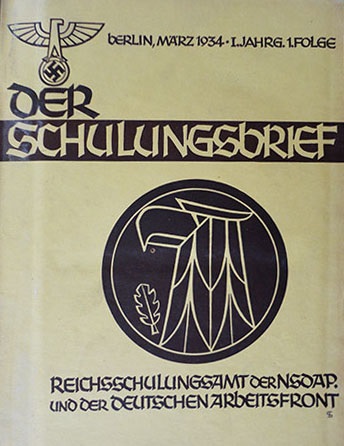
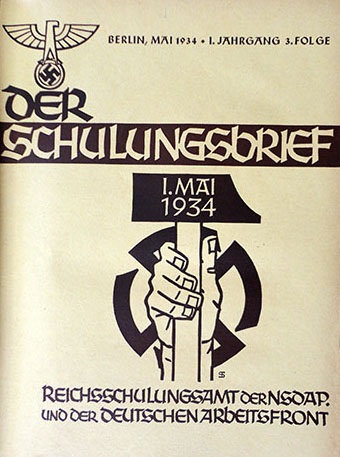
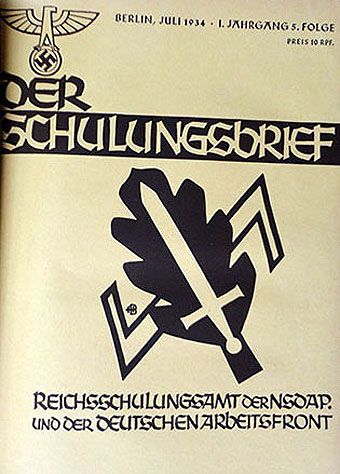
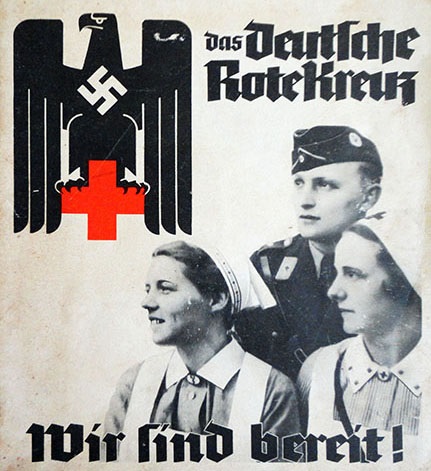
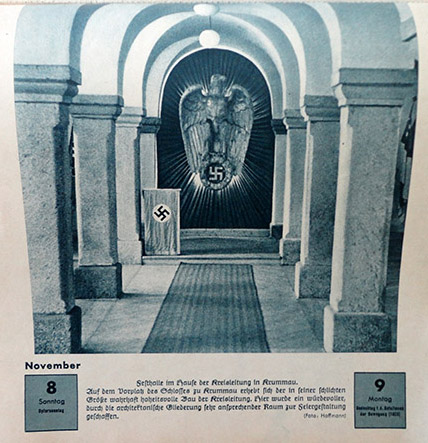
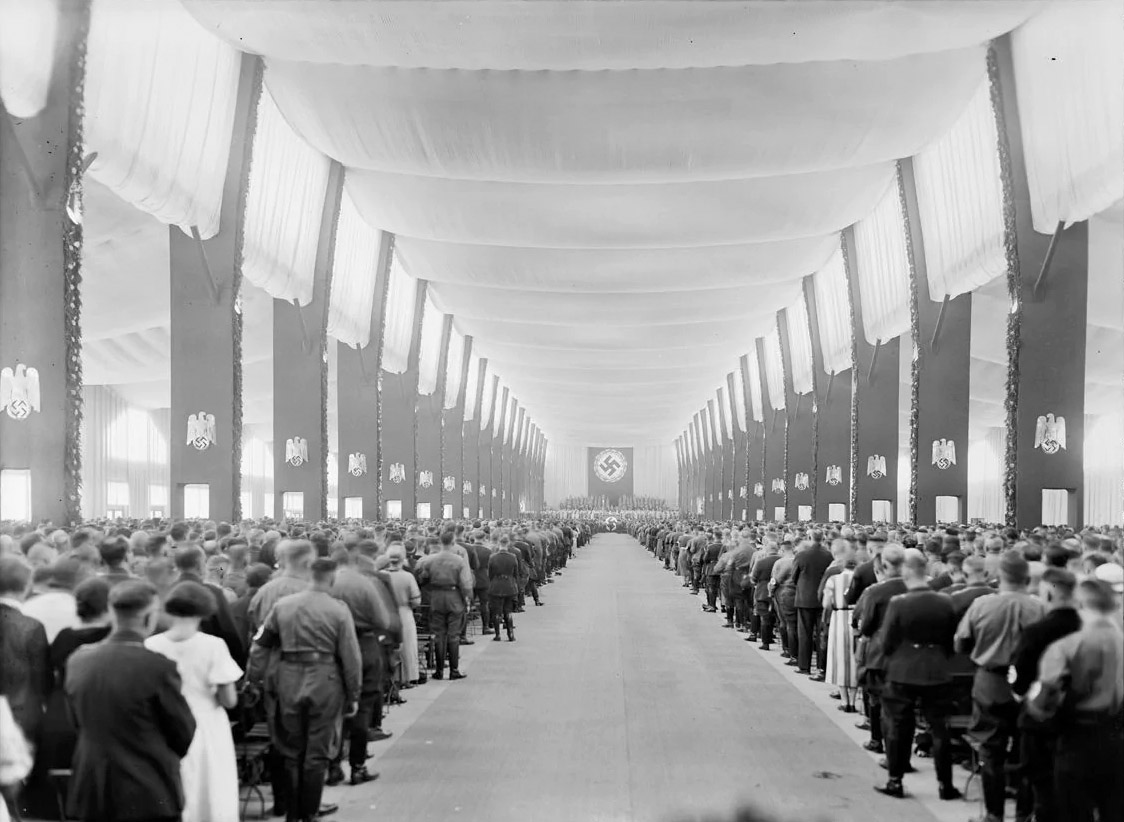
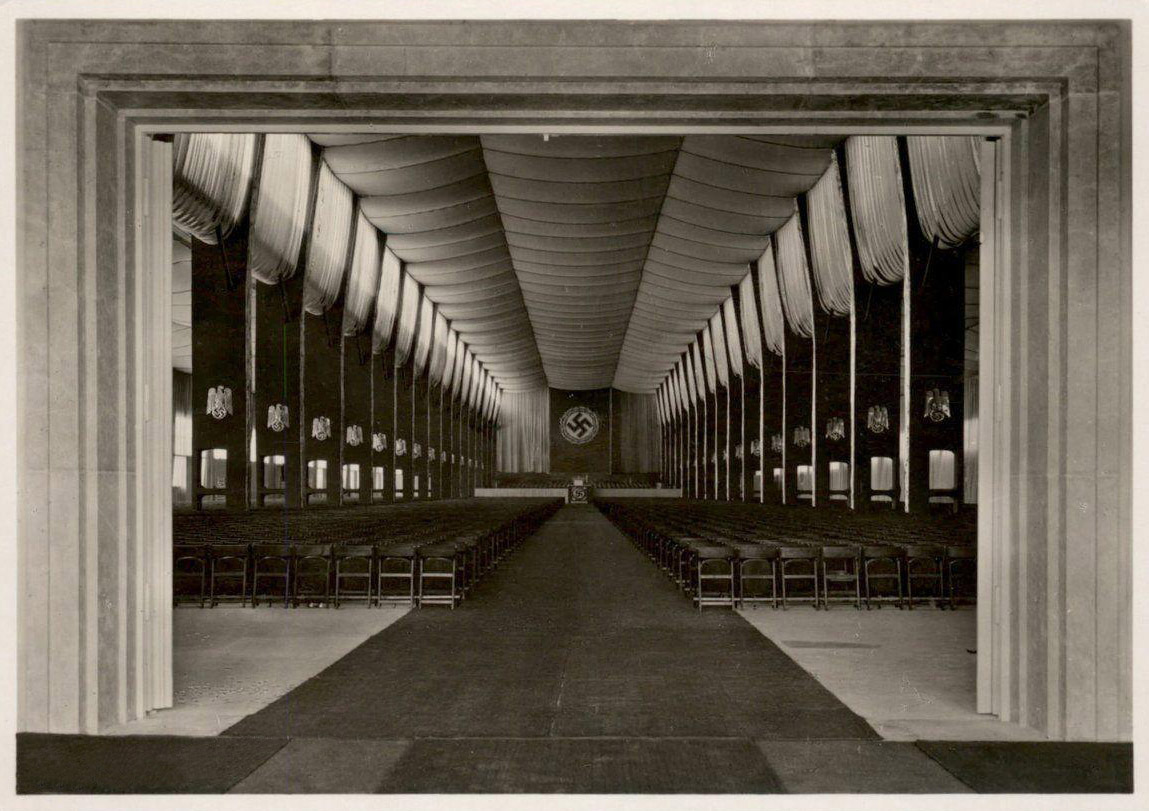
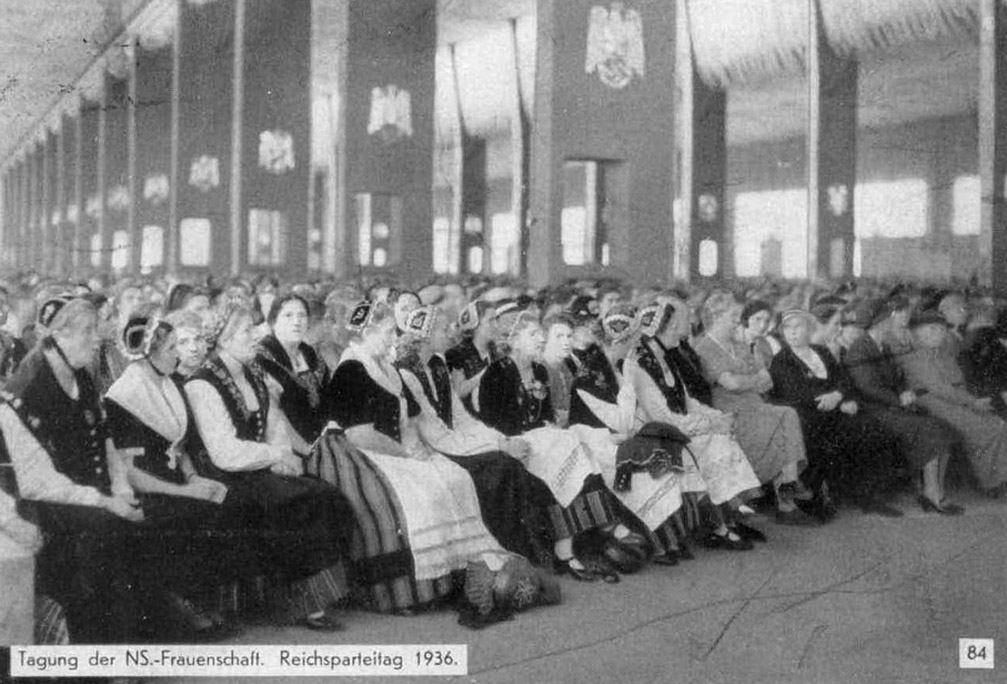
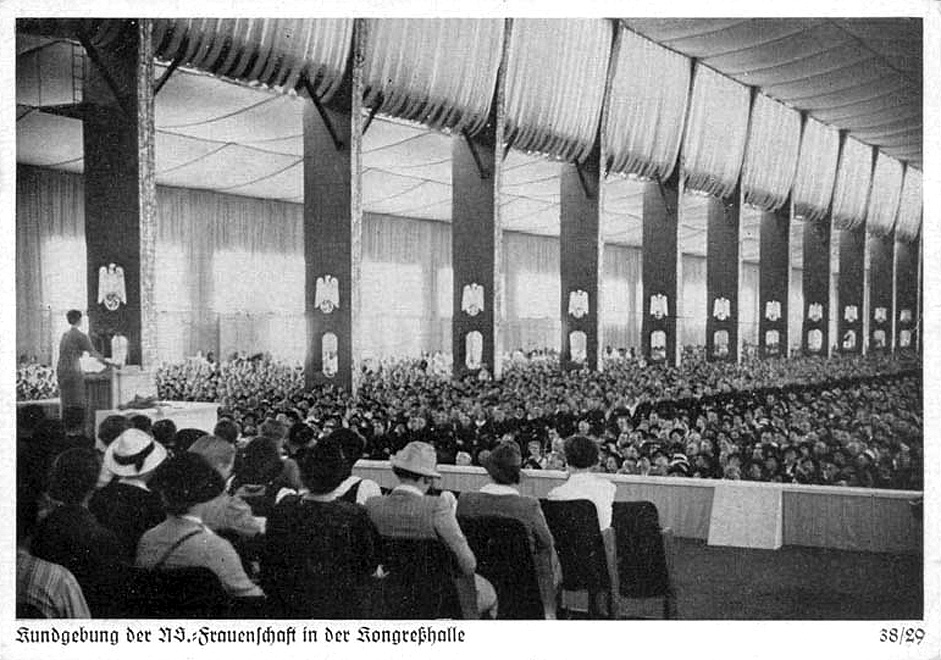
ist das Bollwerk
des Friedens'
is the Bulwark
of Peace)]
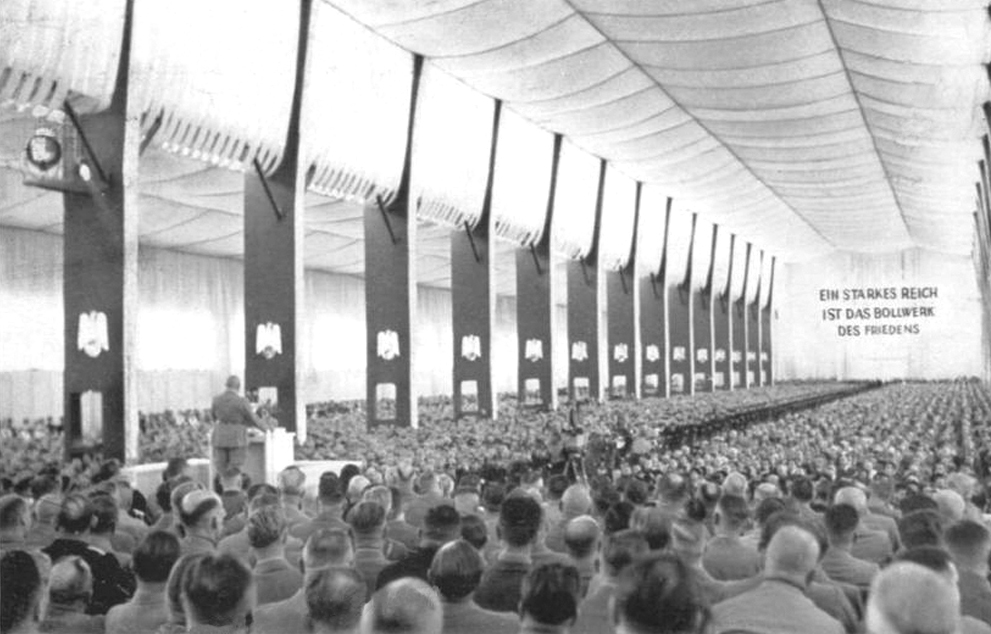
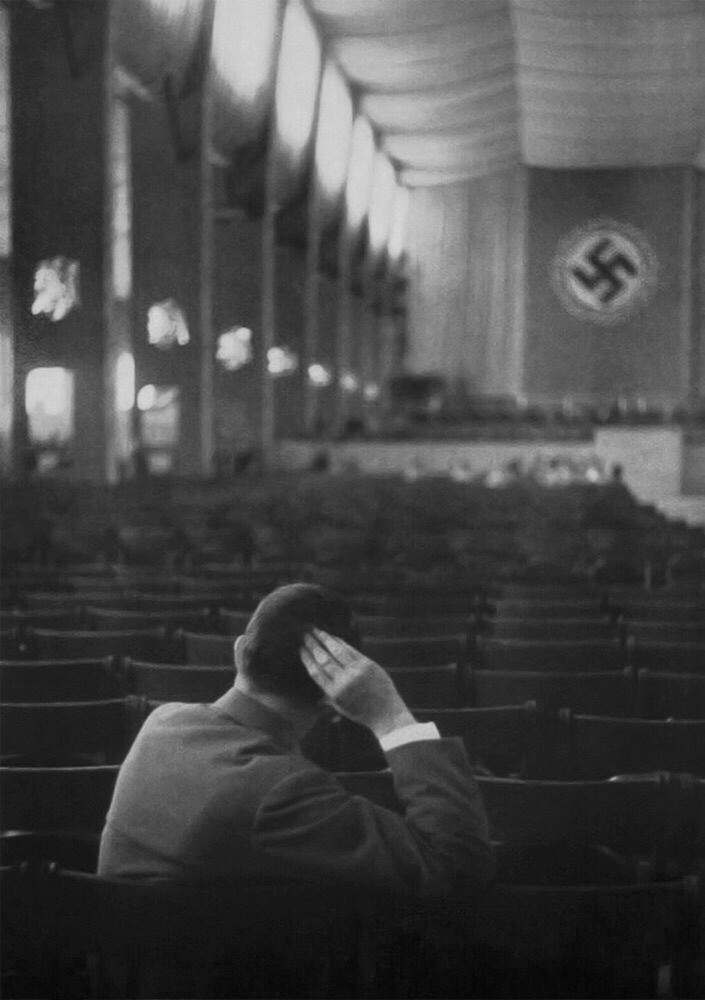
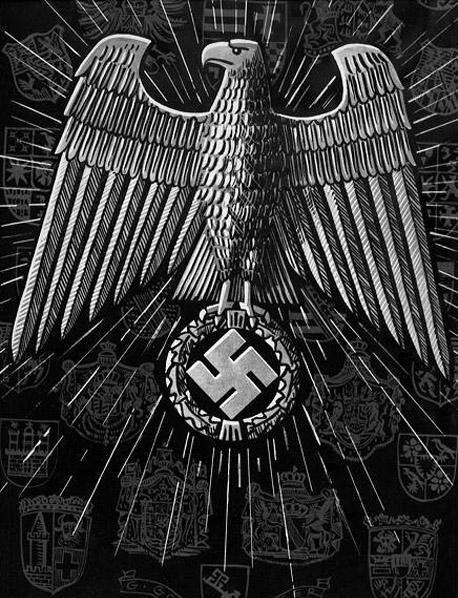
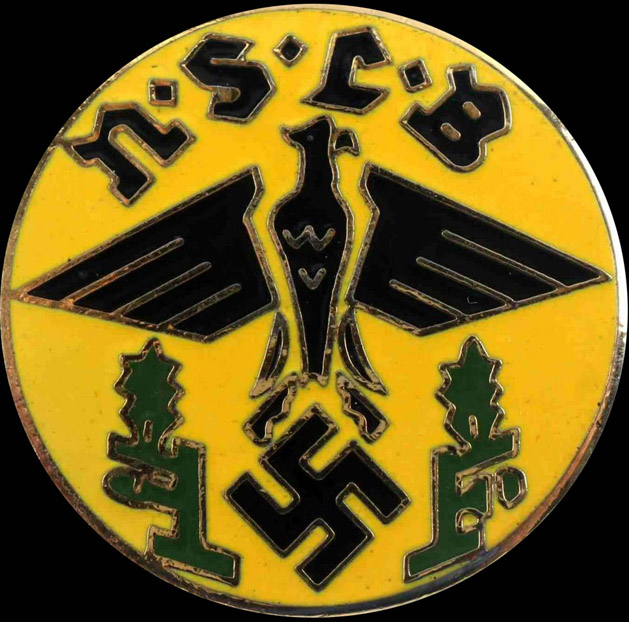
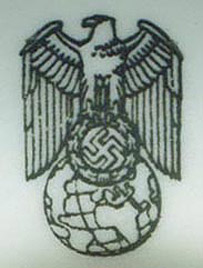

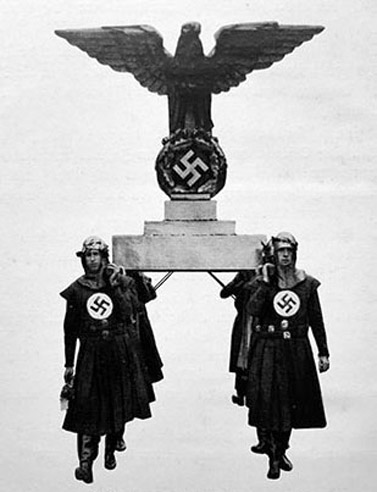
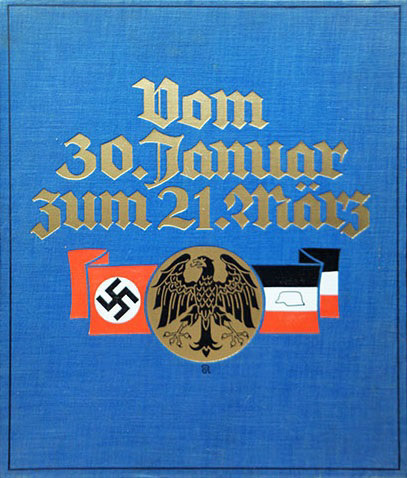
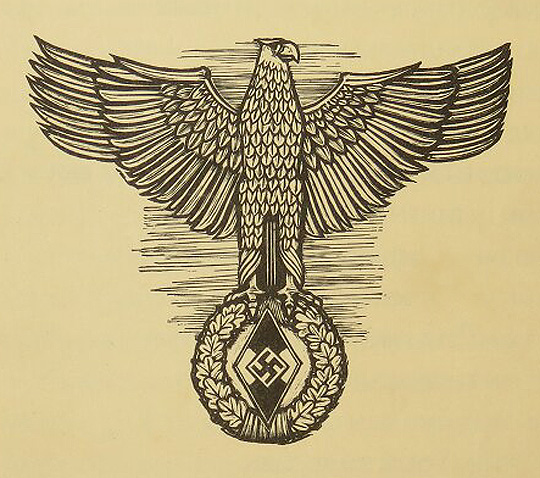
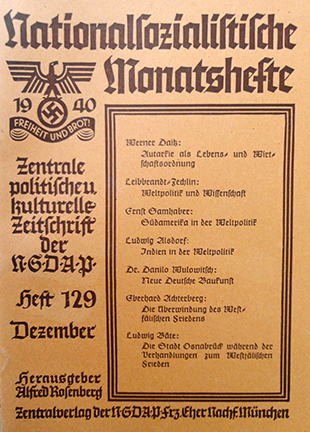
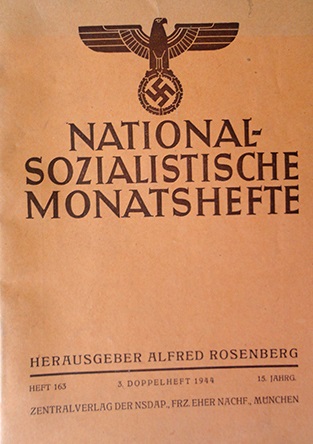
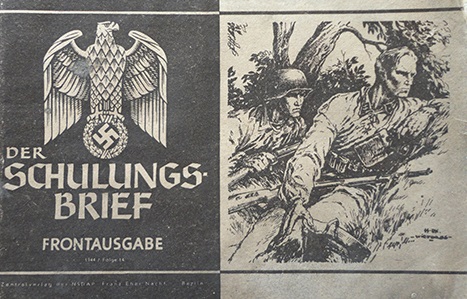
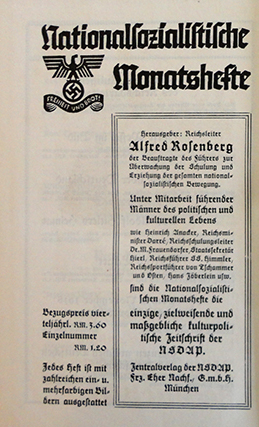
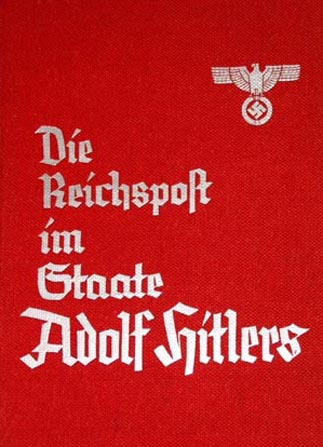
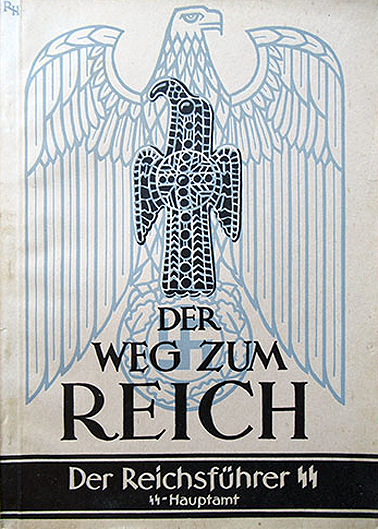
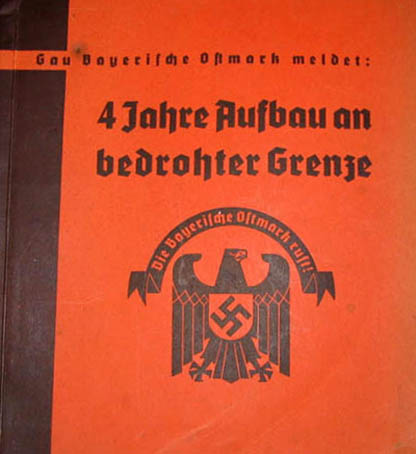
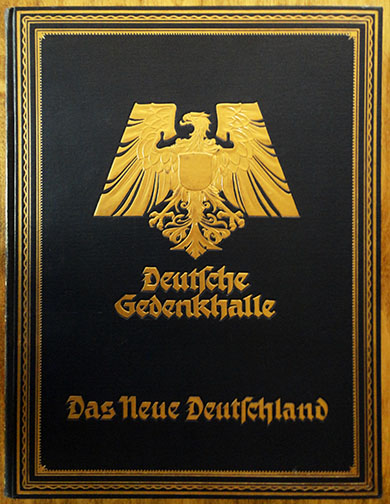

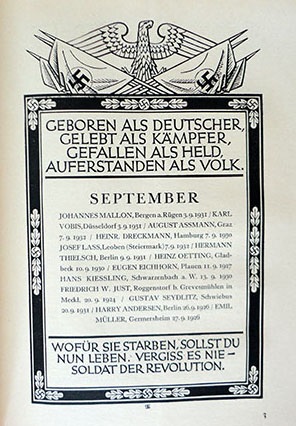

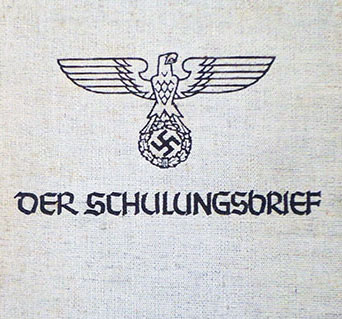
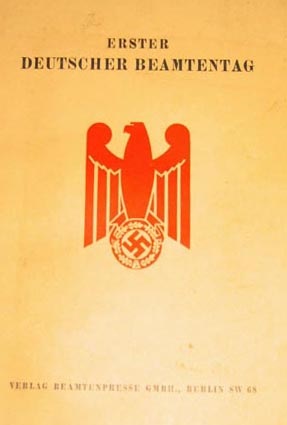
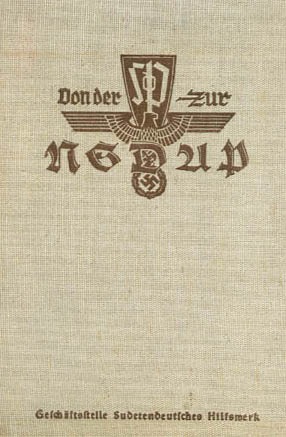

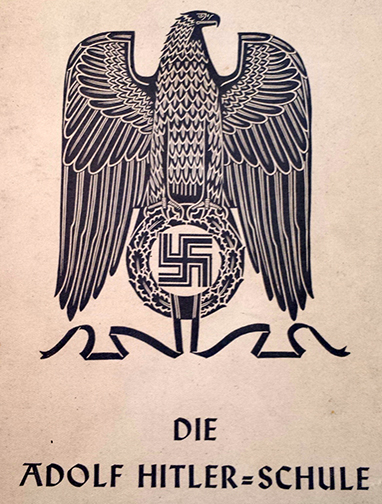
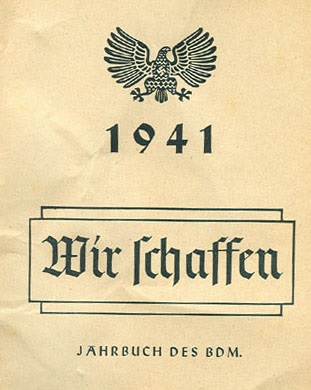
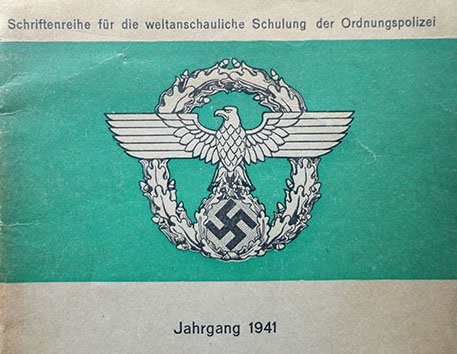
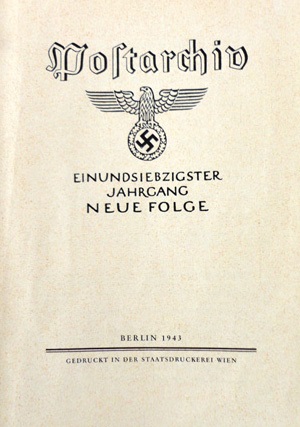
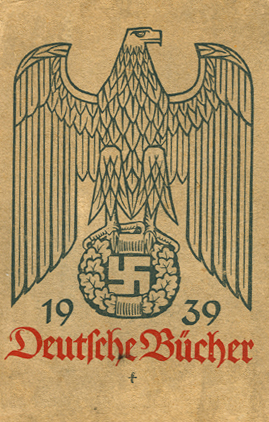
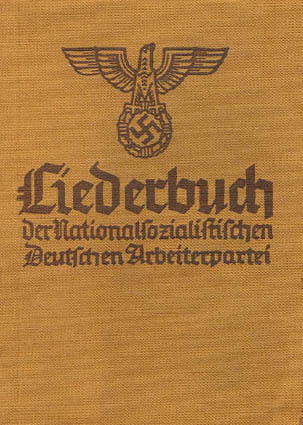
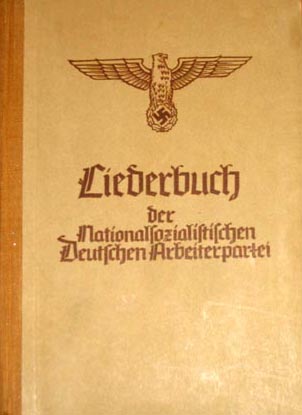
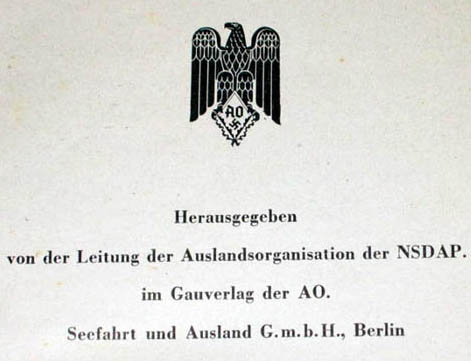
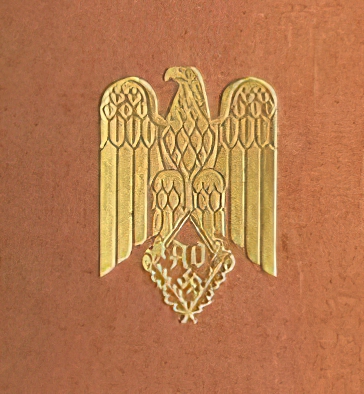
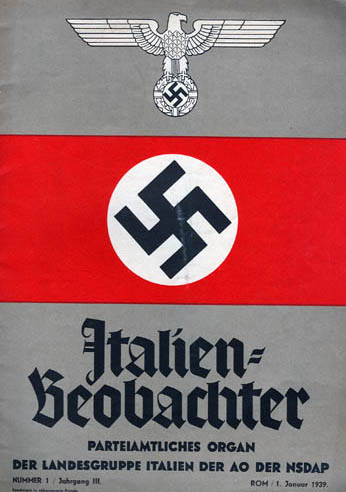

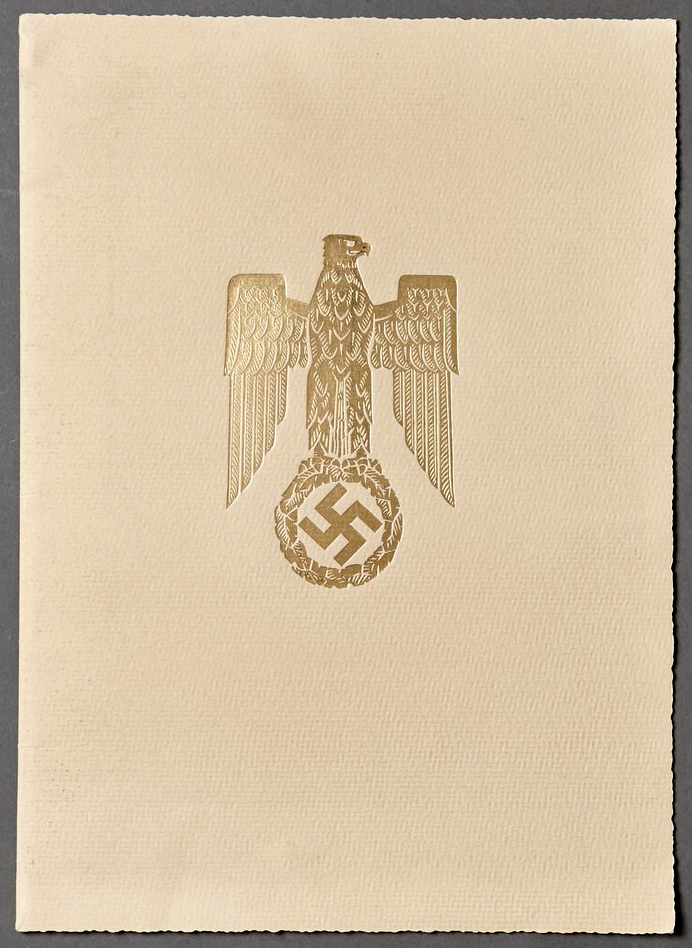
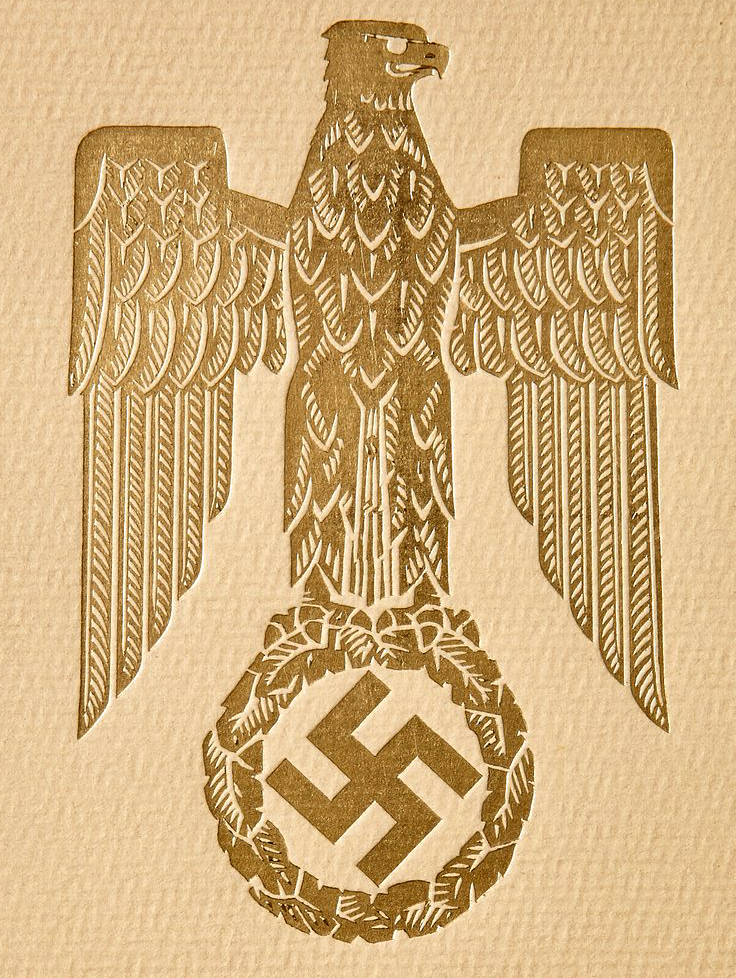
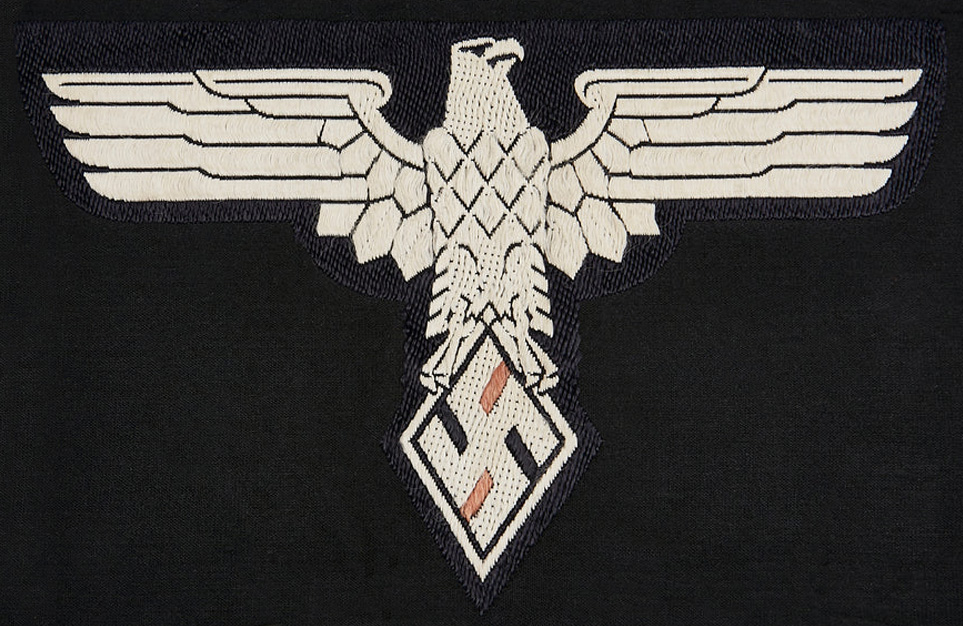
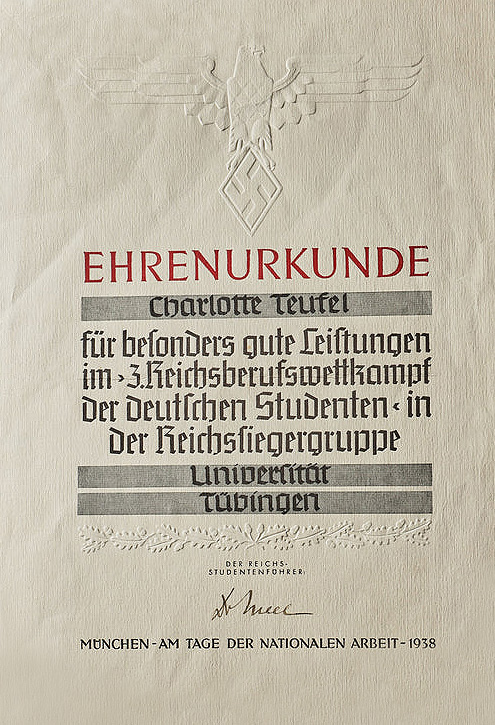
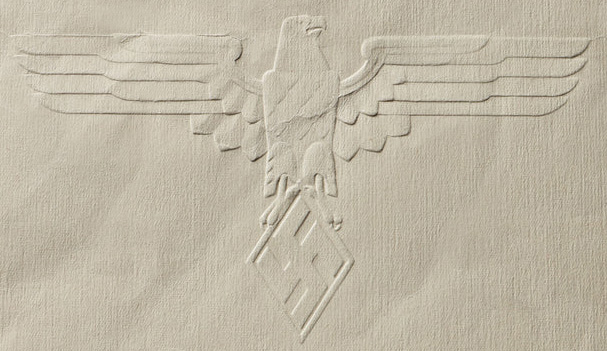

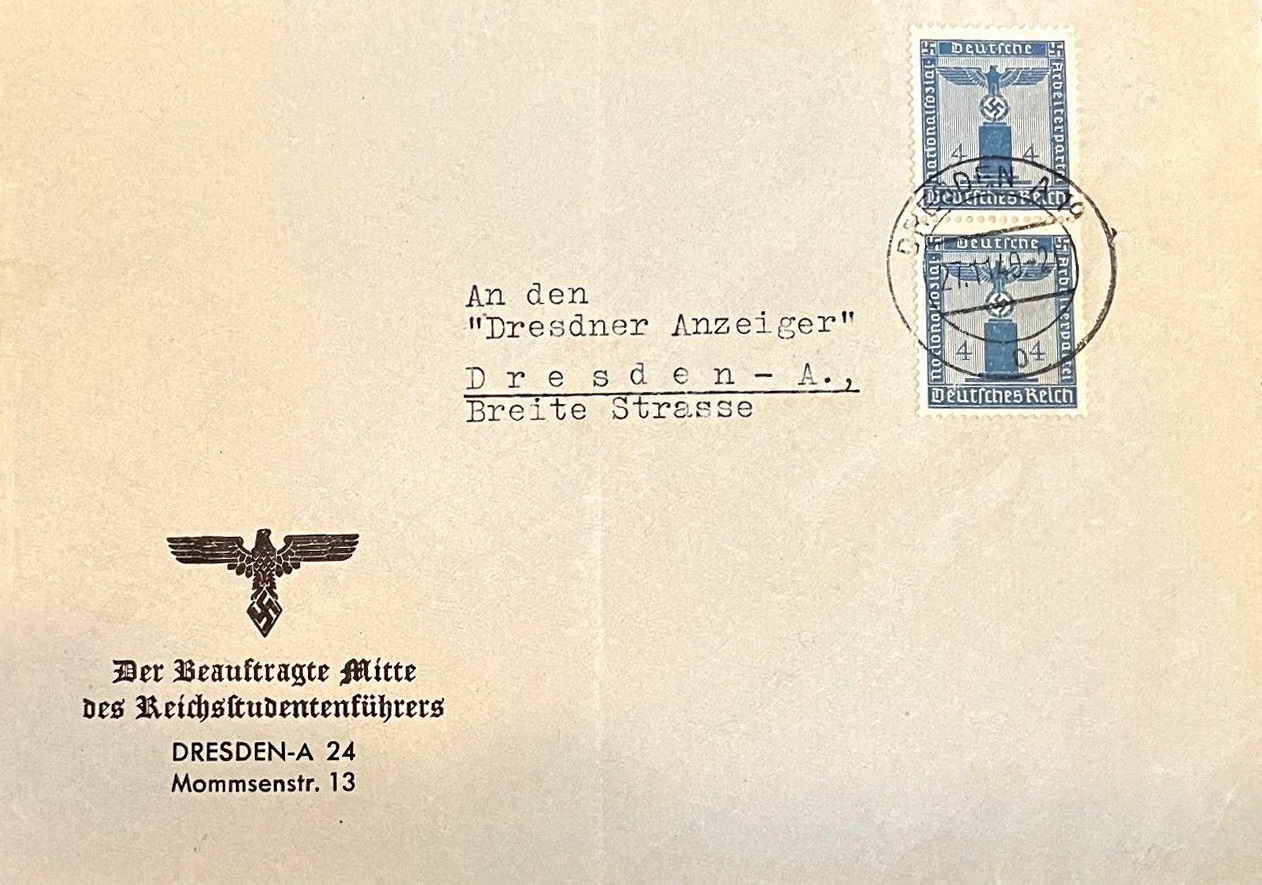
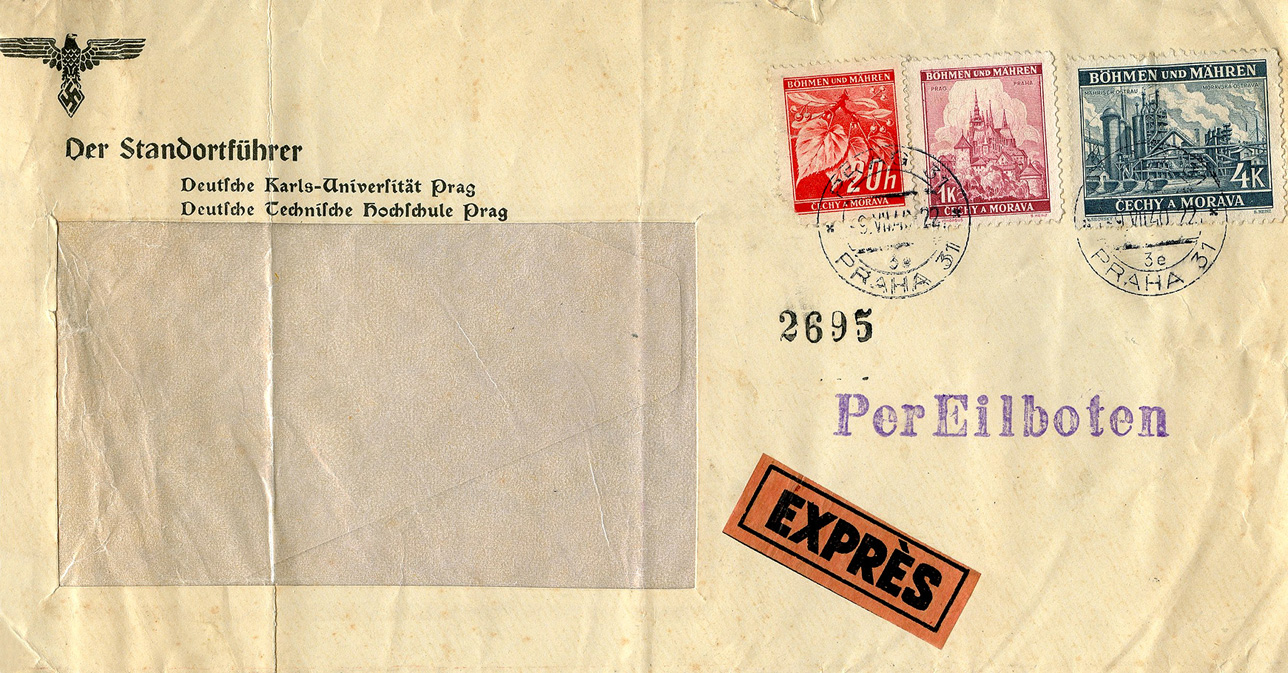

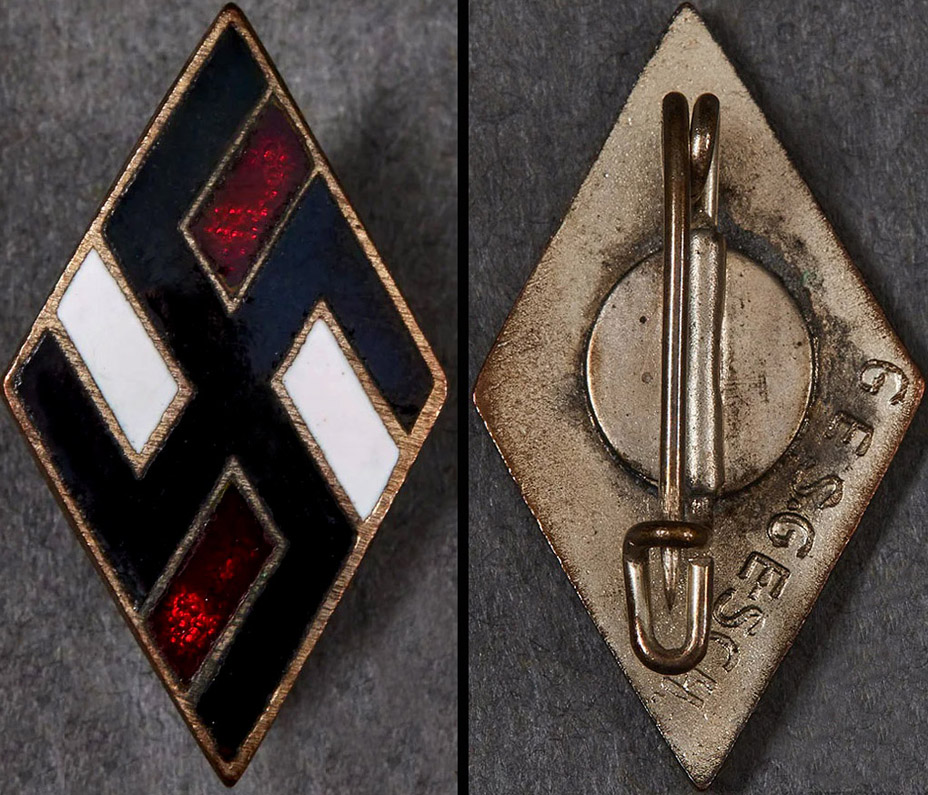
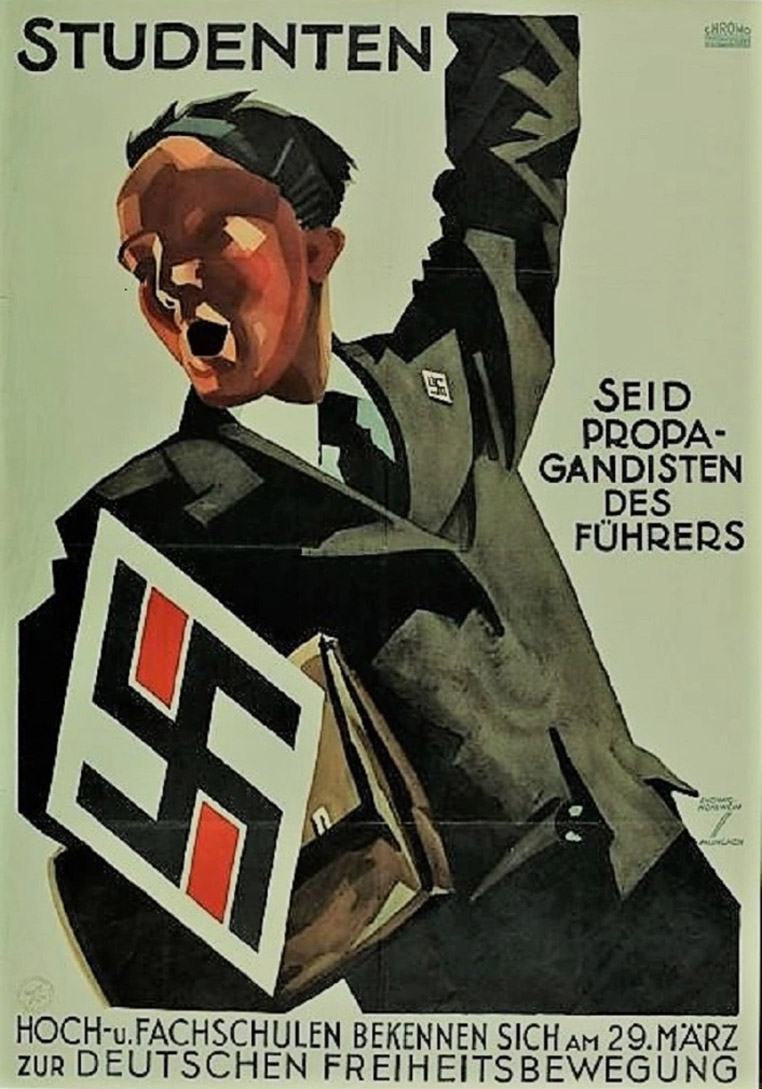
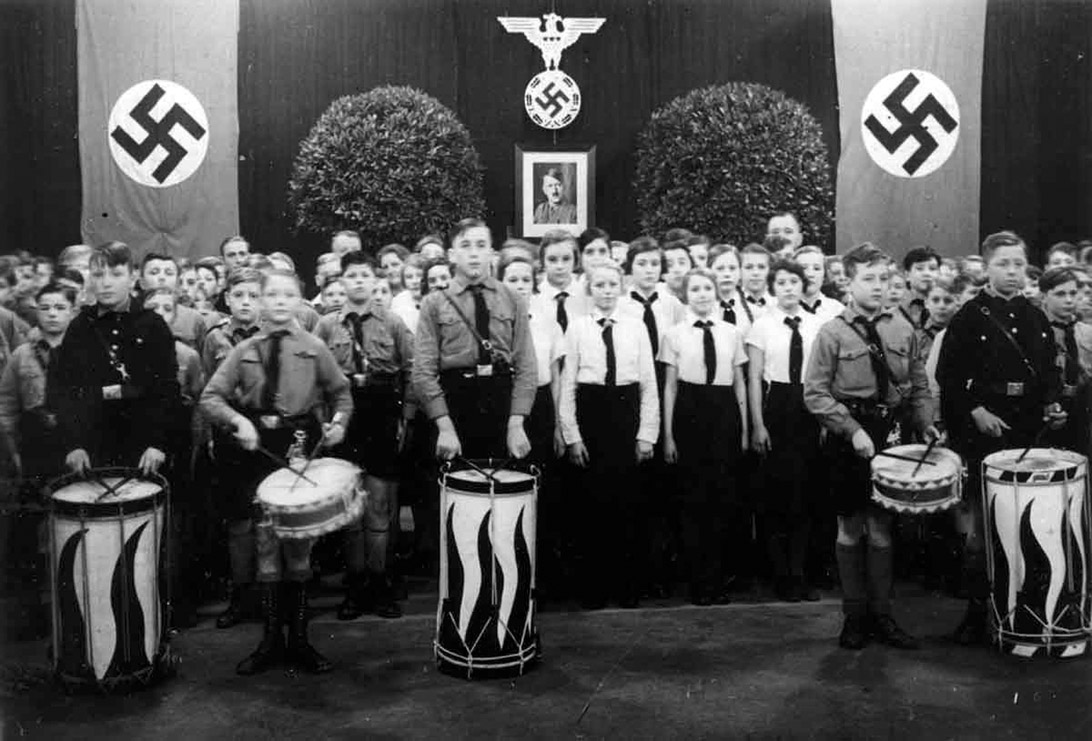
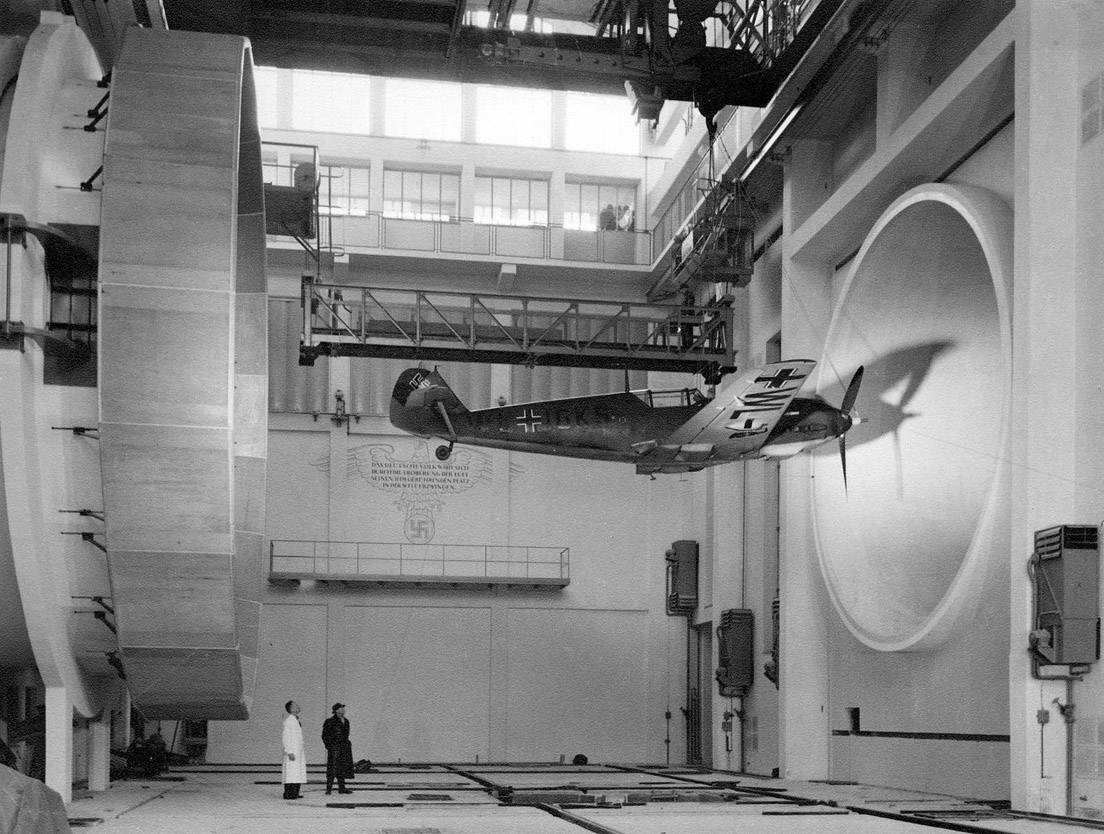
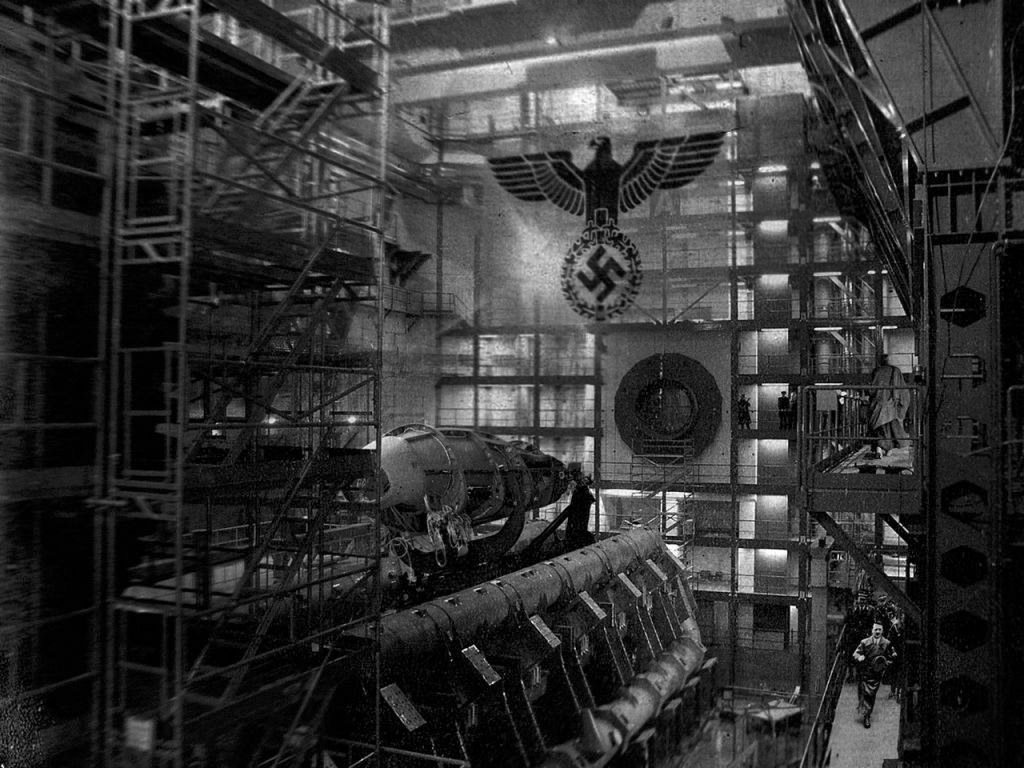
Deutsch ist
Deutsch bleibt die Saar'
was German
is German
will forever be German']
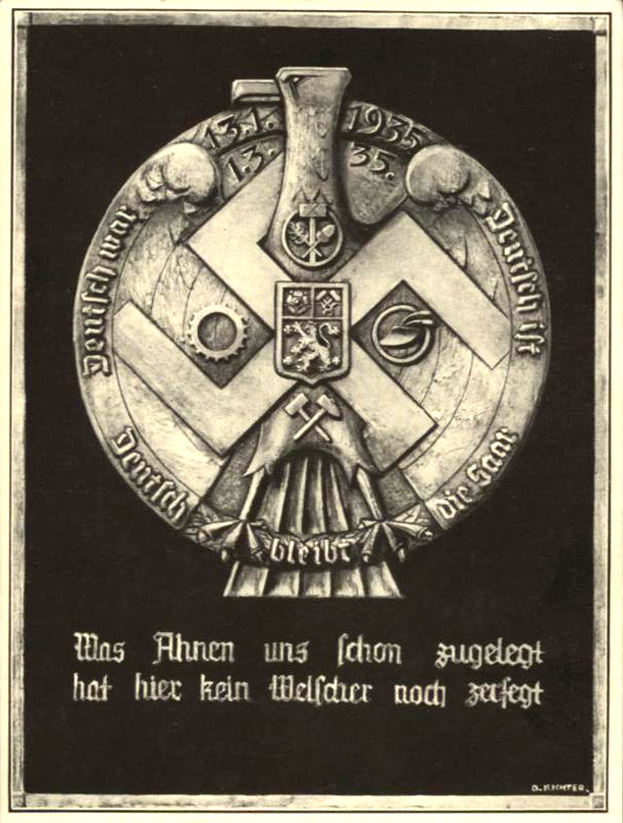
'Wir haben das Joch getragen,
nun sind wir frei
und bleiben frei!
Wir danken unserem Führer
Adolf Hitler
durch
UNSERE TREUE.'
now we are free
and stay free!
We thank our guide
Adolf Hitler
by
OUR LOYALTY' 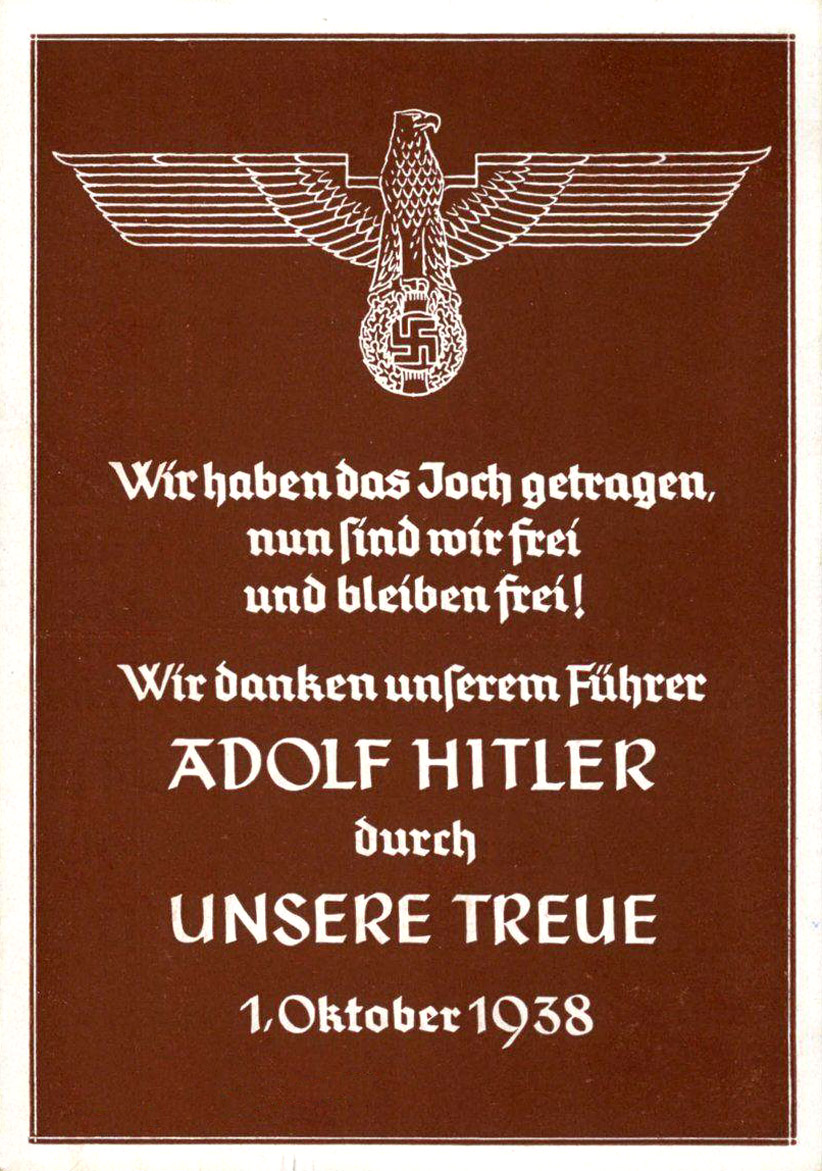
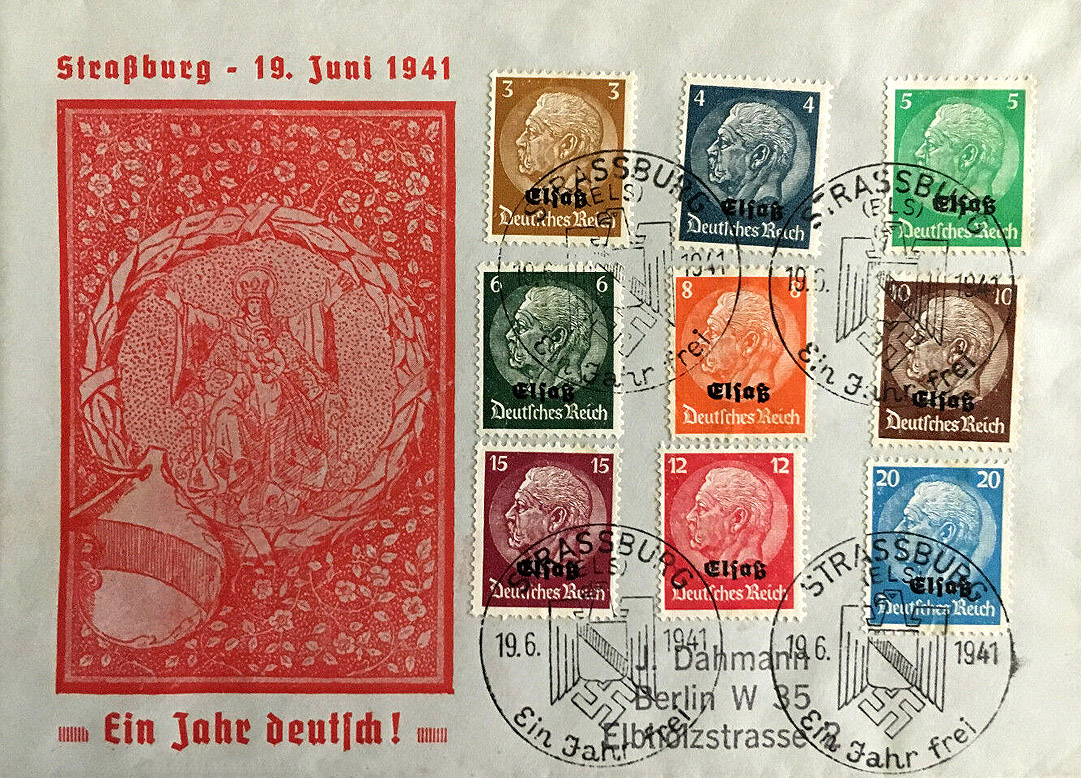

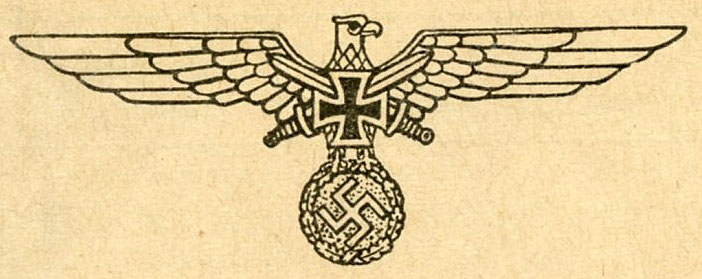
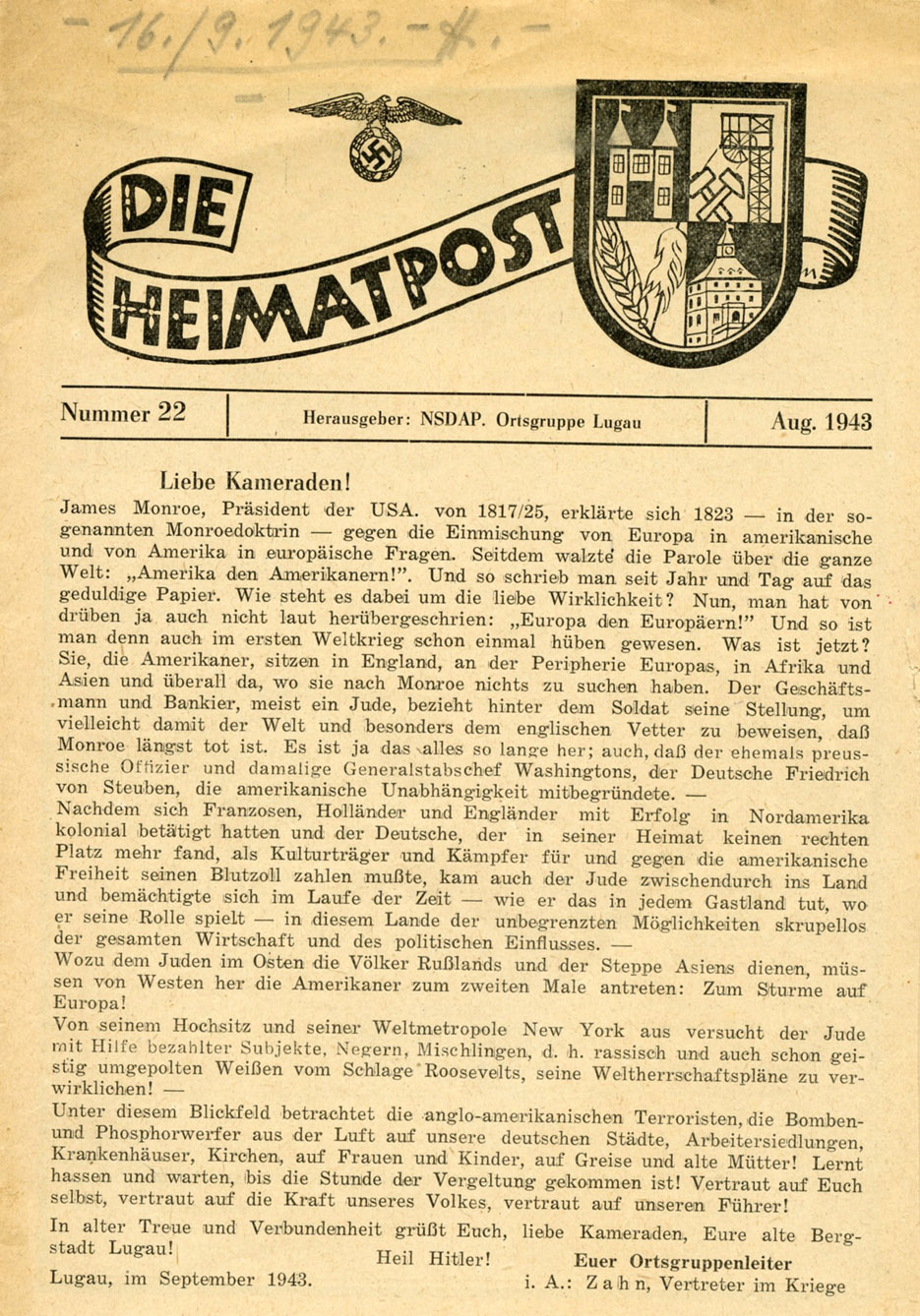
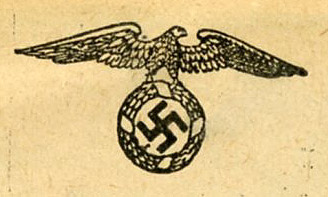

Number 22
Publisher: NSDAP, local group Lugau
August, 1943
Dear comrades!
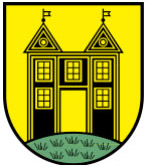
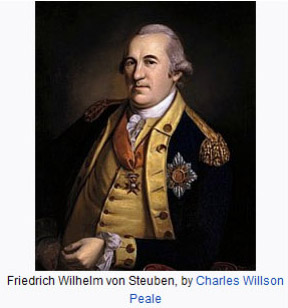
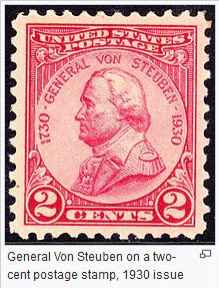
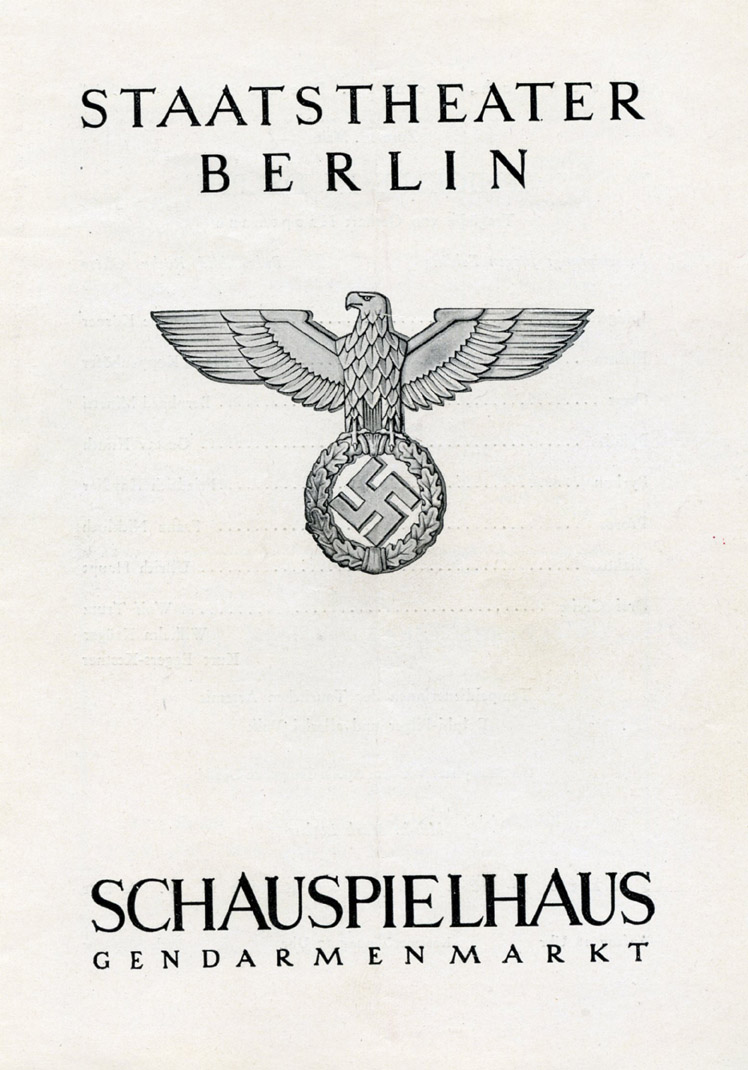

Jugendherberge auf dem Aschberg
(Reich Association for German Youth Hostels, State Association of Saxony
Youth hostel on the Aschberg).
'The Aschberg is a hill, 98 m (320 ft) above sea level, in the Hütten Hills Nature Park in Schleswig-Holstein, Germany. In good weather, the view reaches as far as the Baltic Sea.'

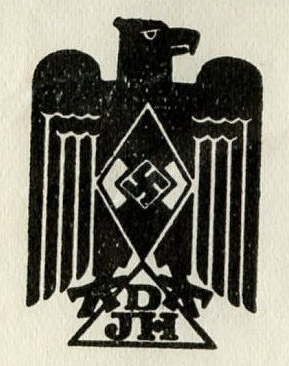
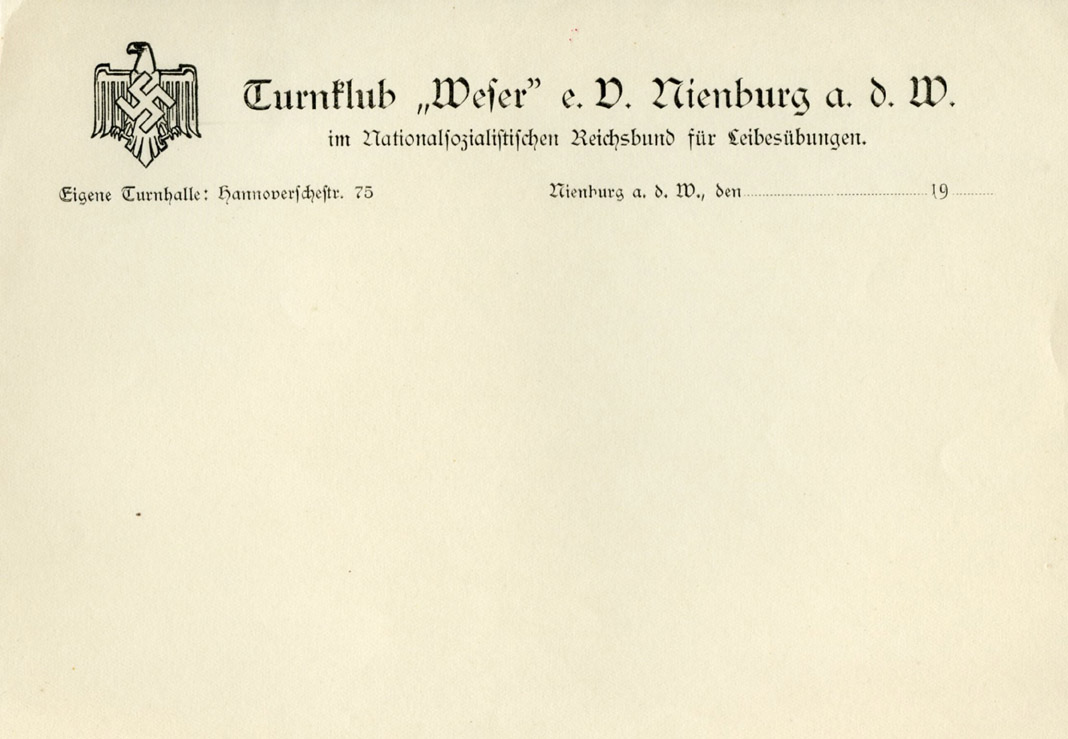

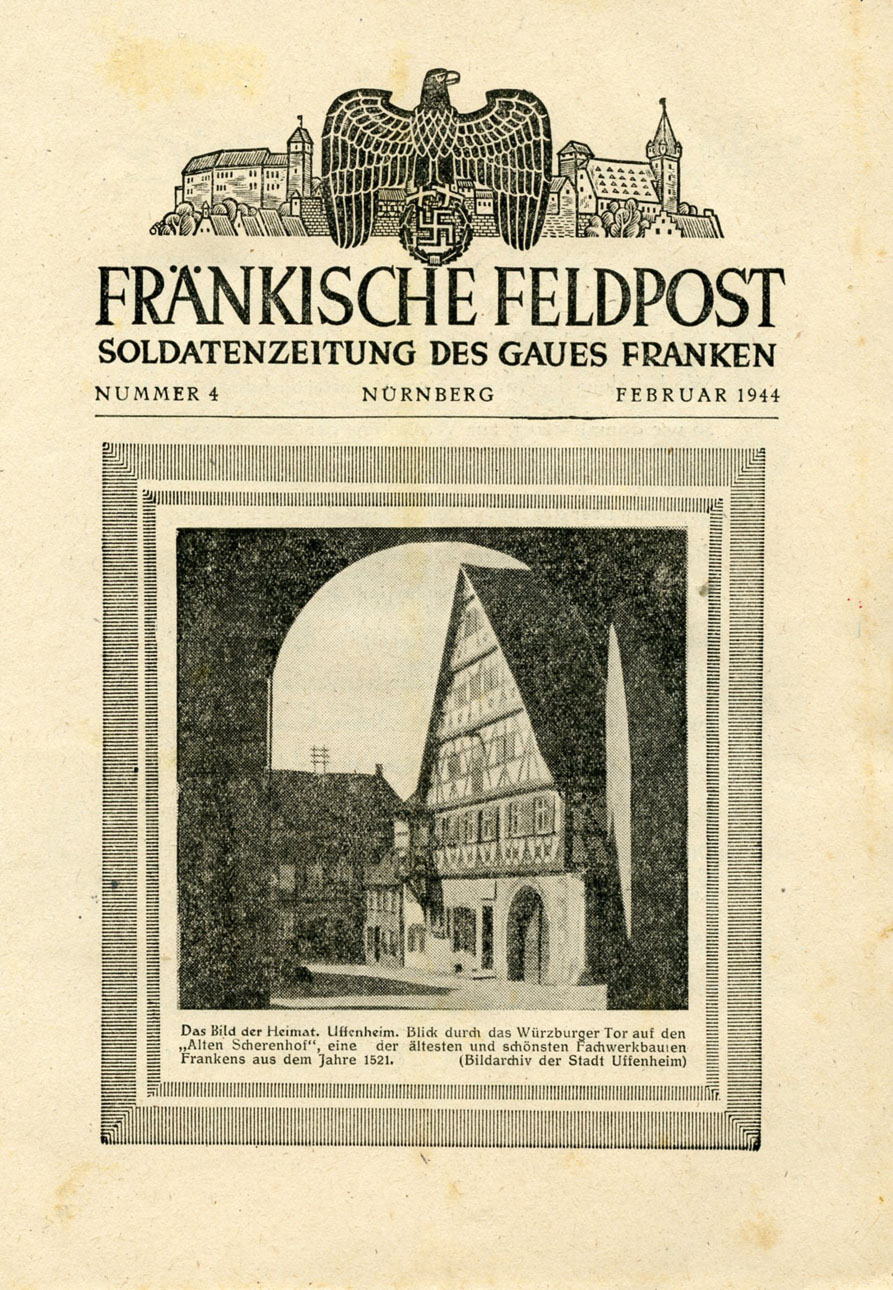

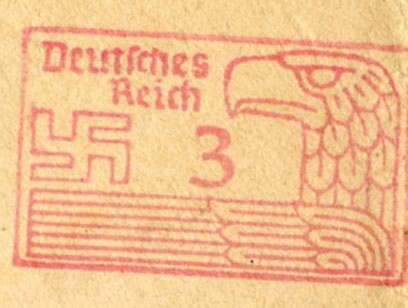
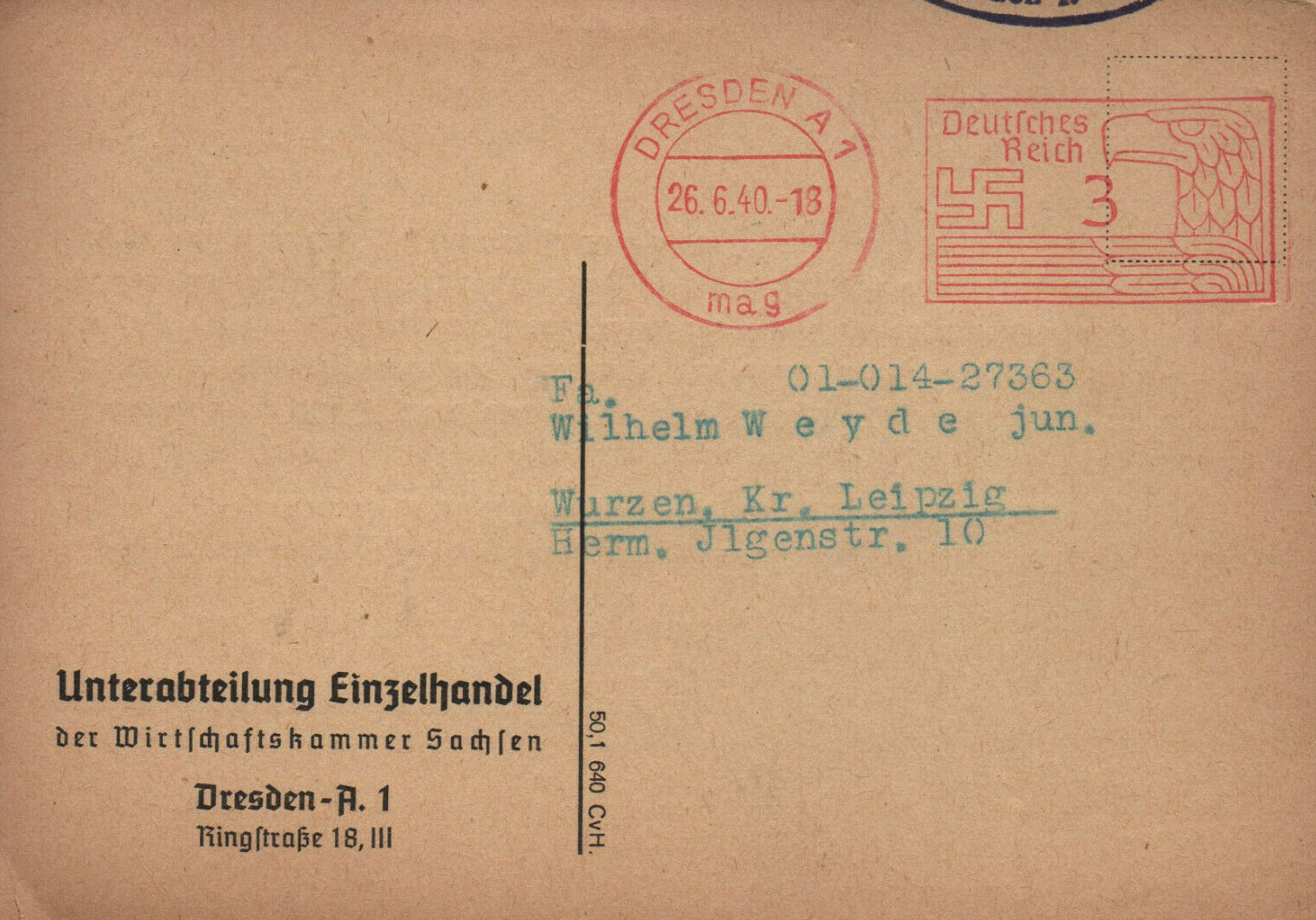
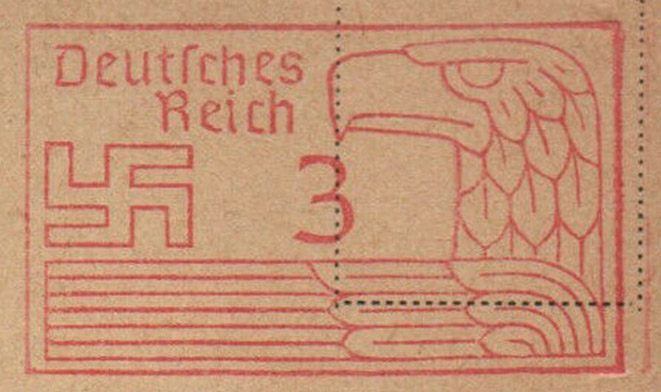
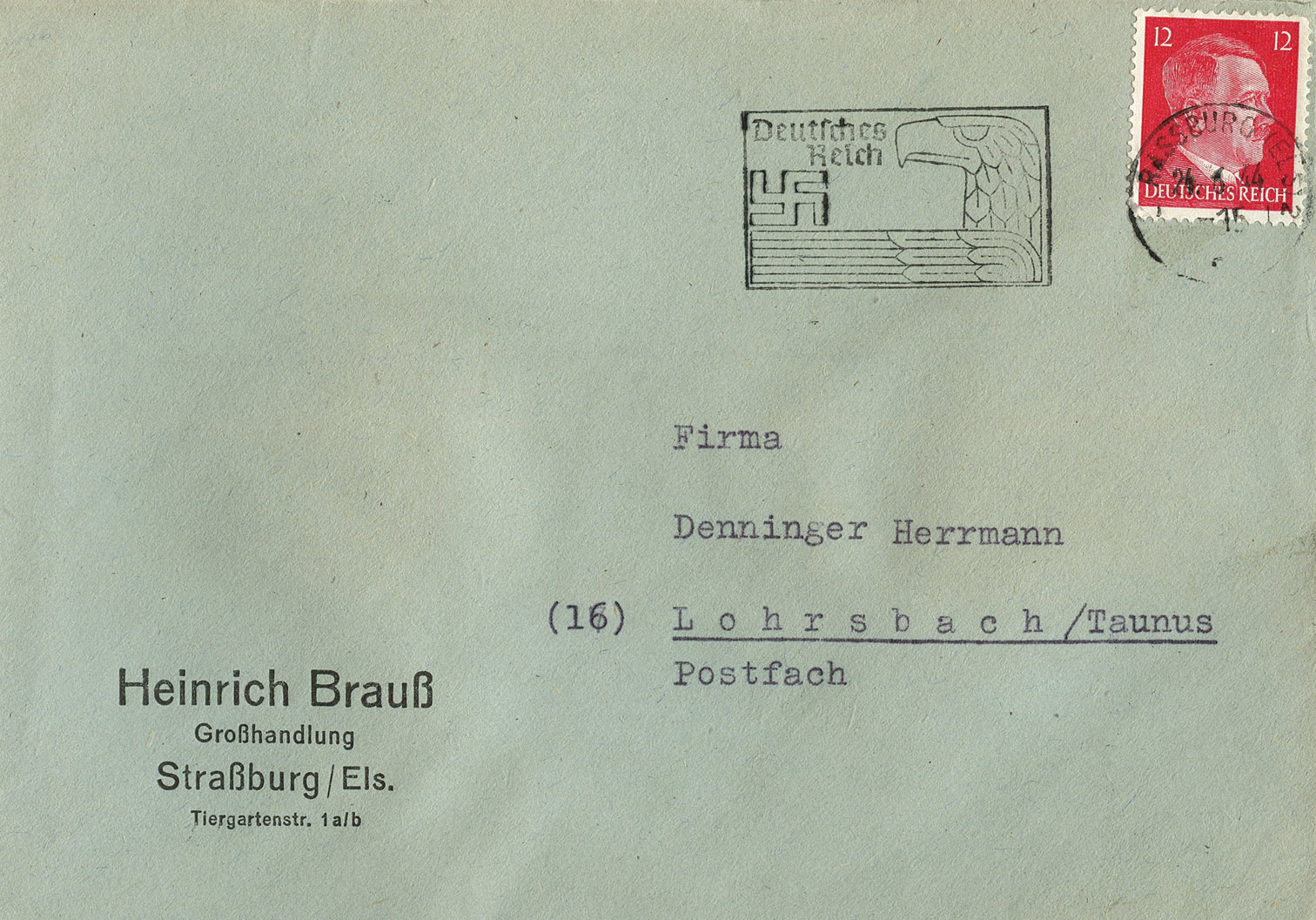
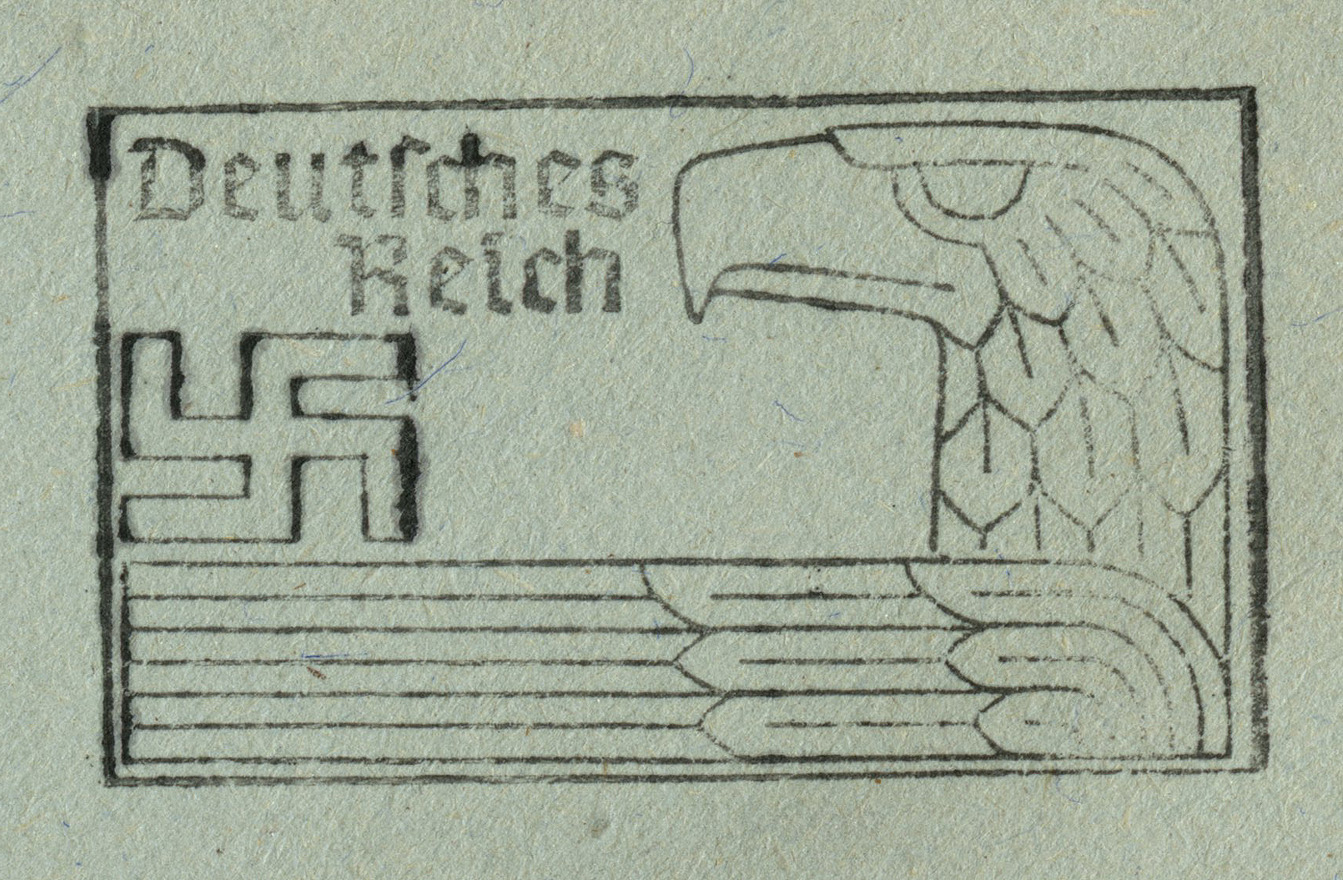
'A stenographer is a person trained to type or write in shorthand methods, enabling them to write as quickly as people speak. Stenographers can create lasting documentation of everything from court cases to medical conversations.'
'...nach dem Willen unseres grossen Führers Adolf Hitler dazu beigetragen haben... (...according to the will of our great leader Adolf Hitler...)